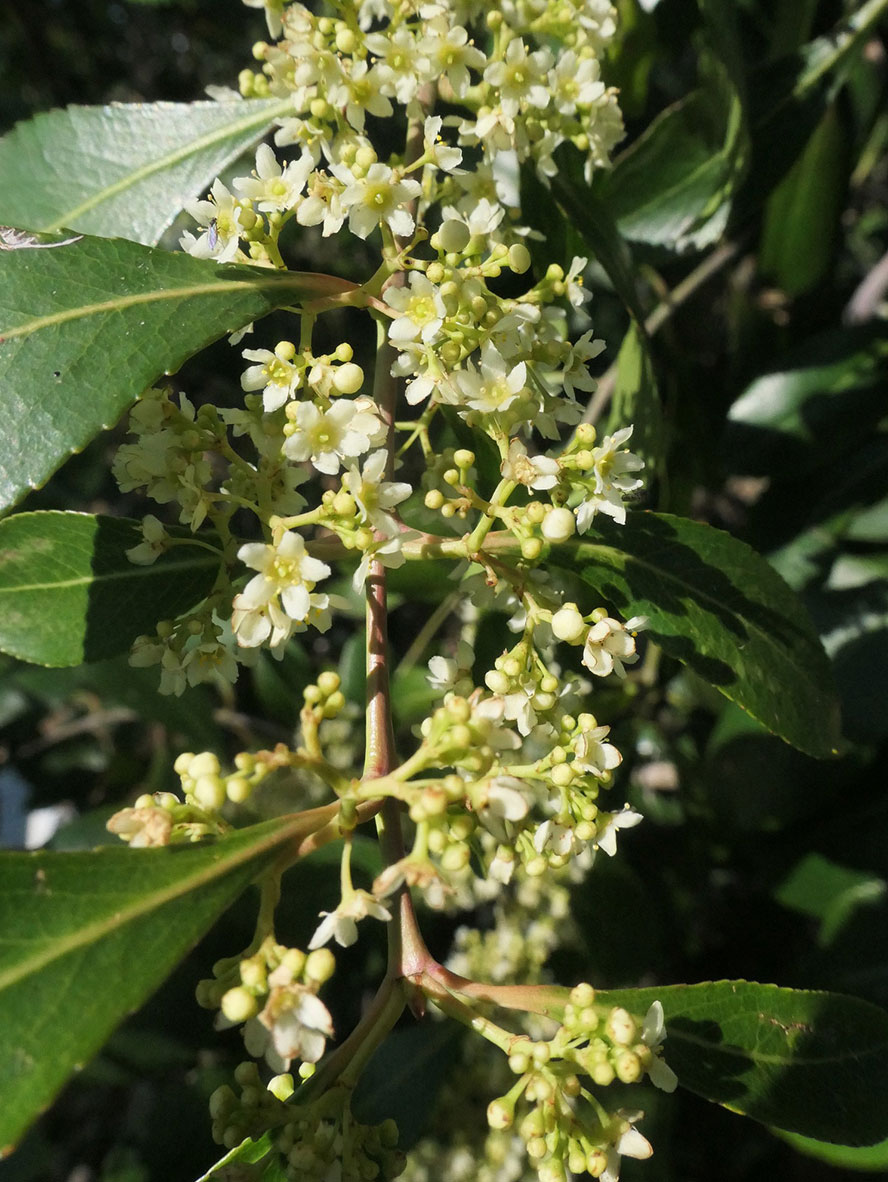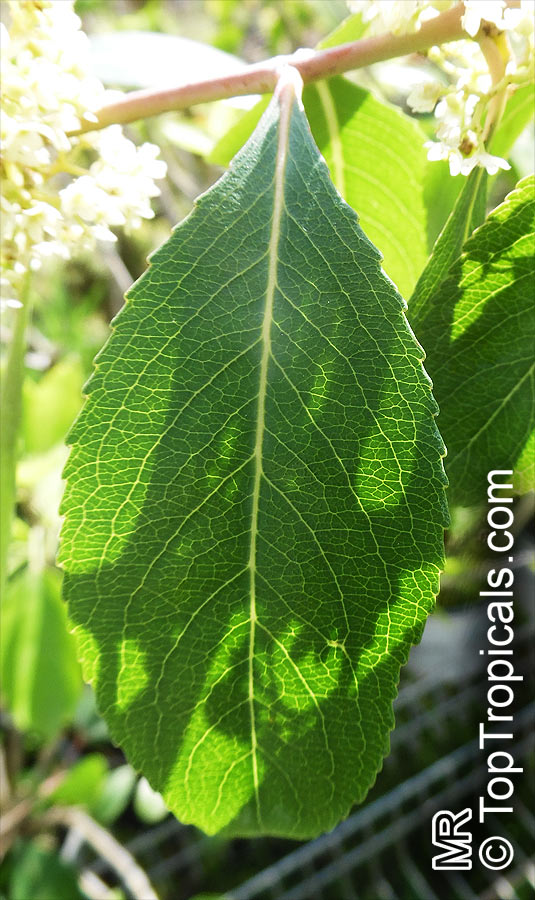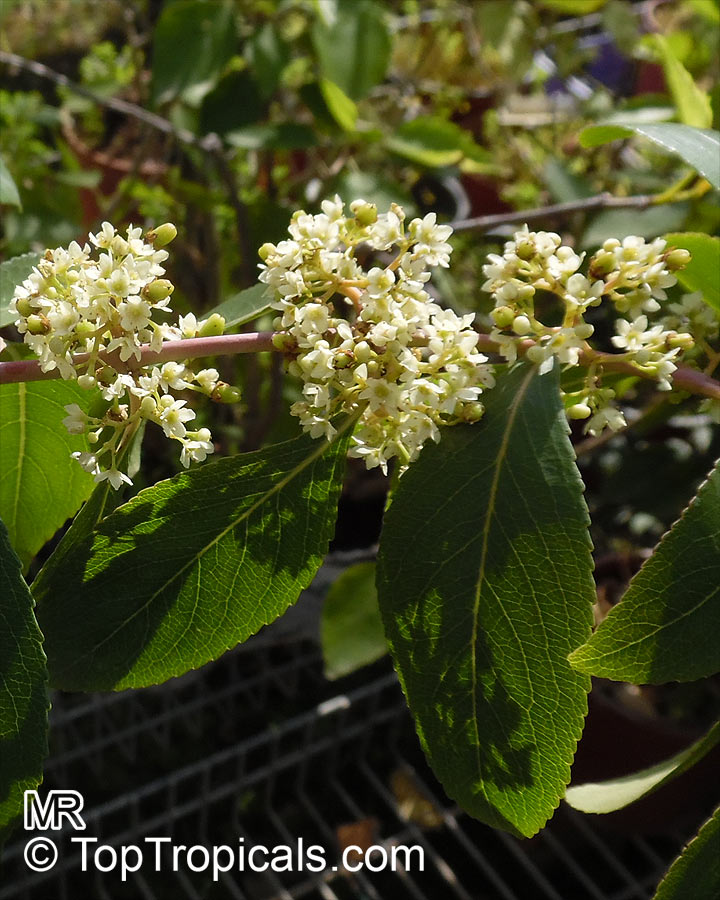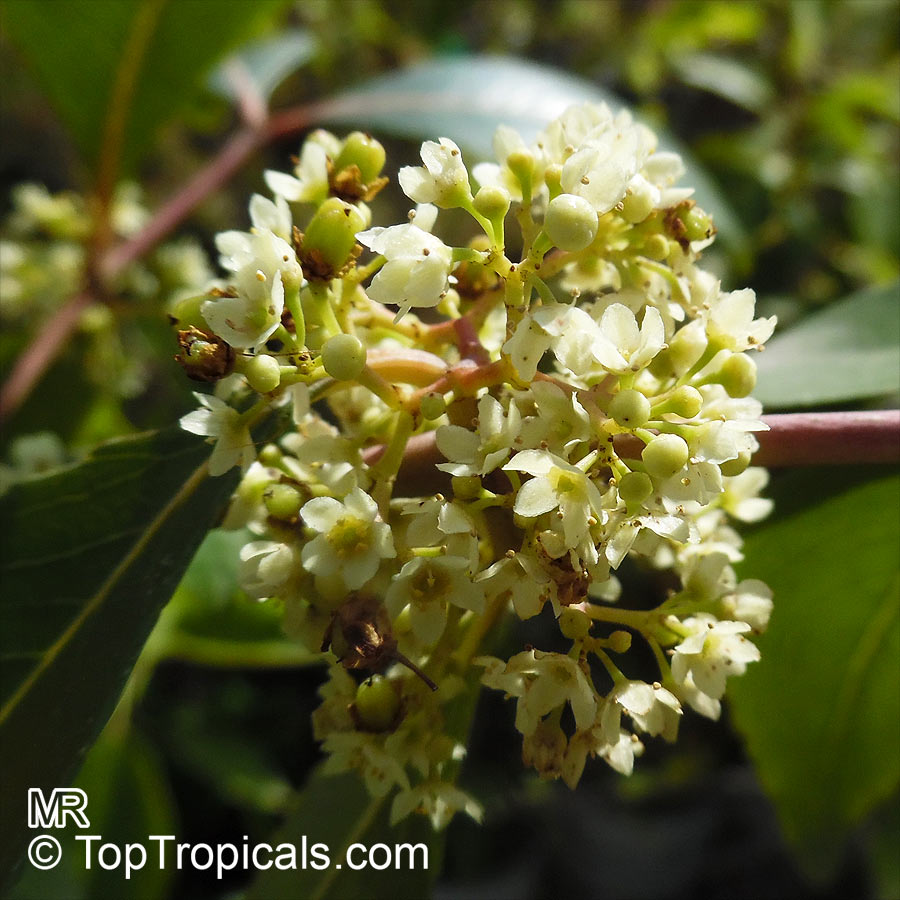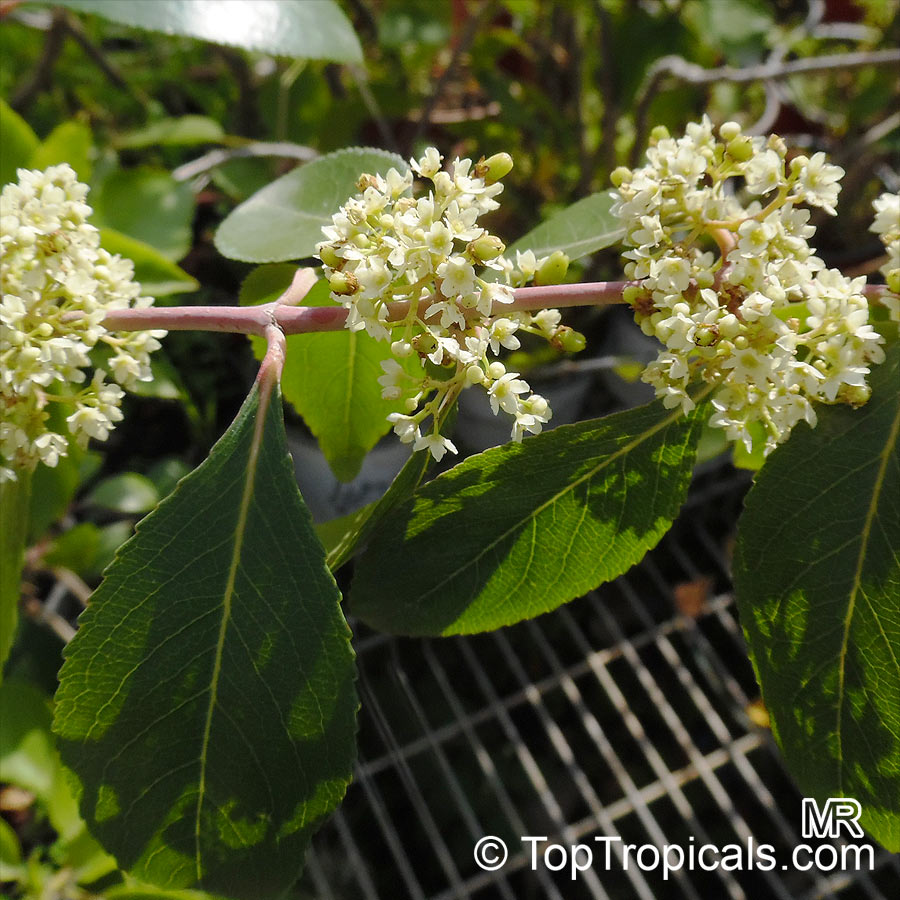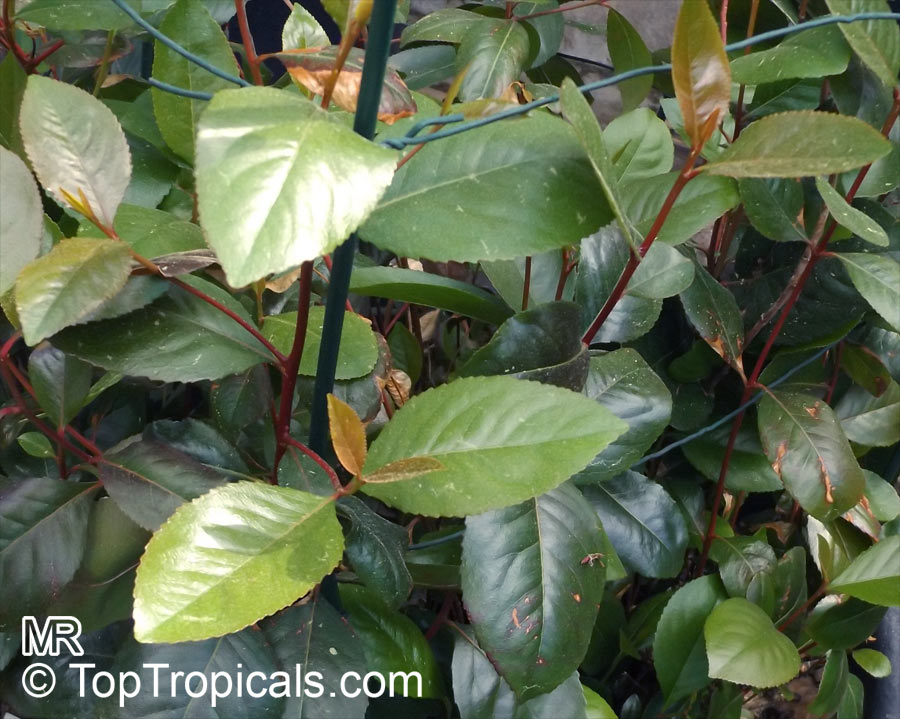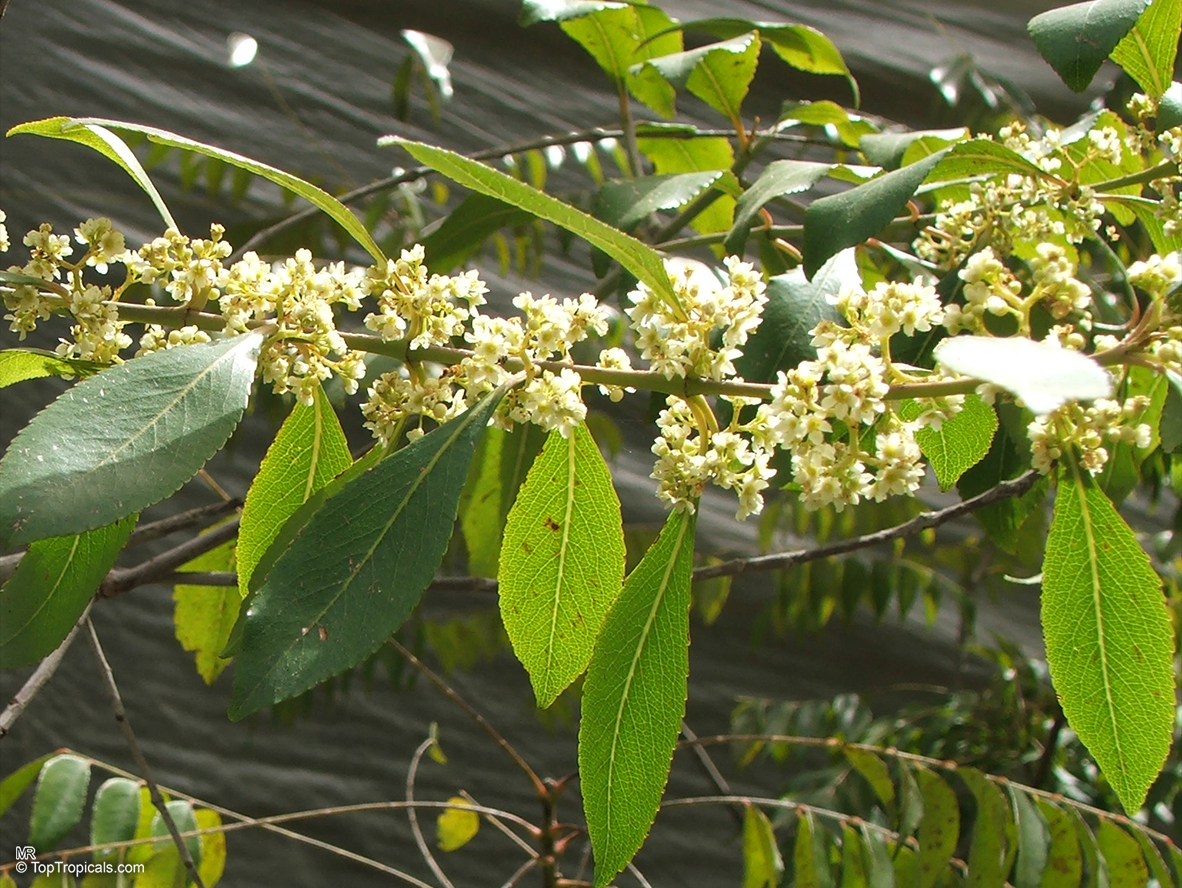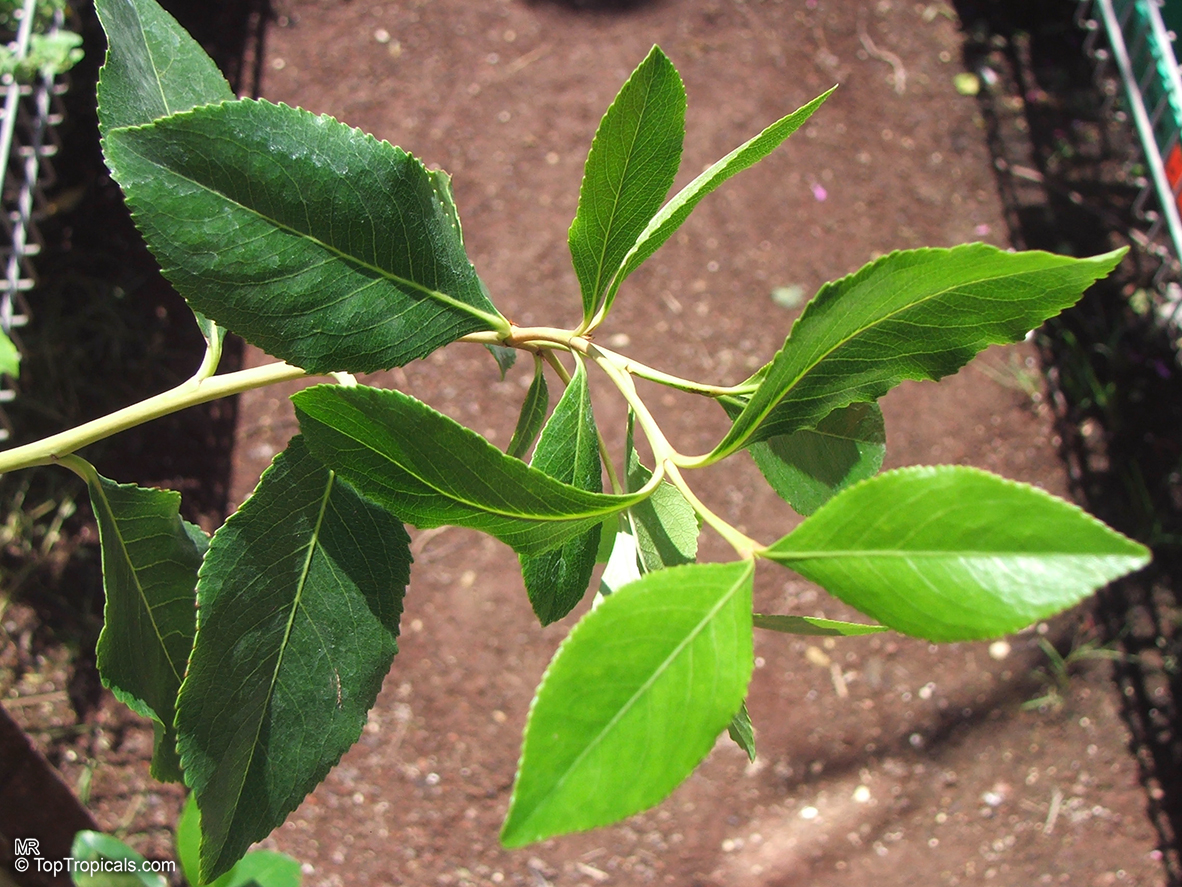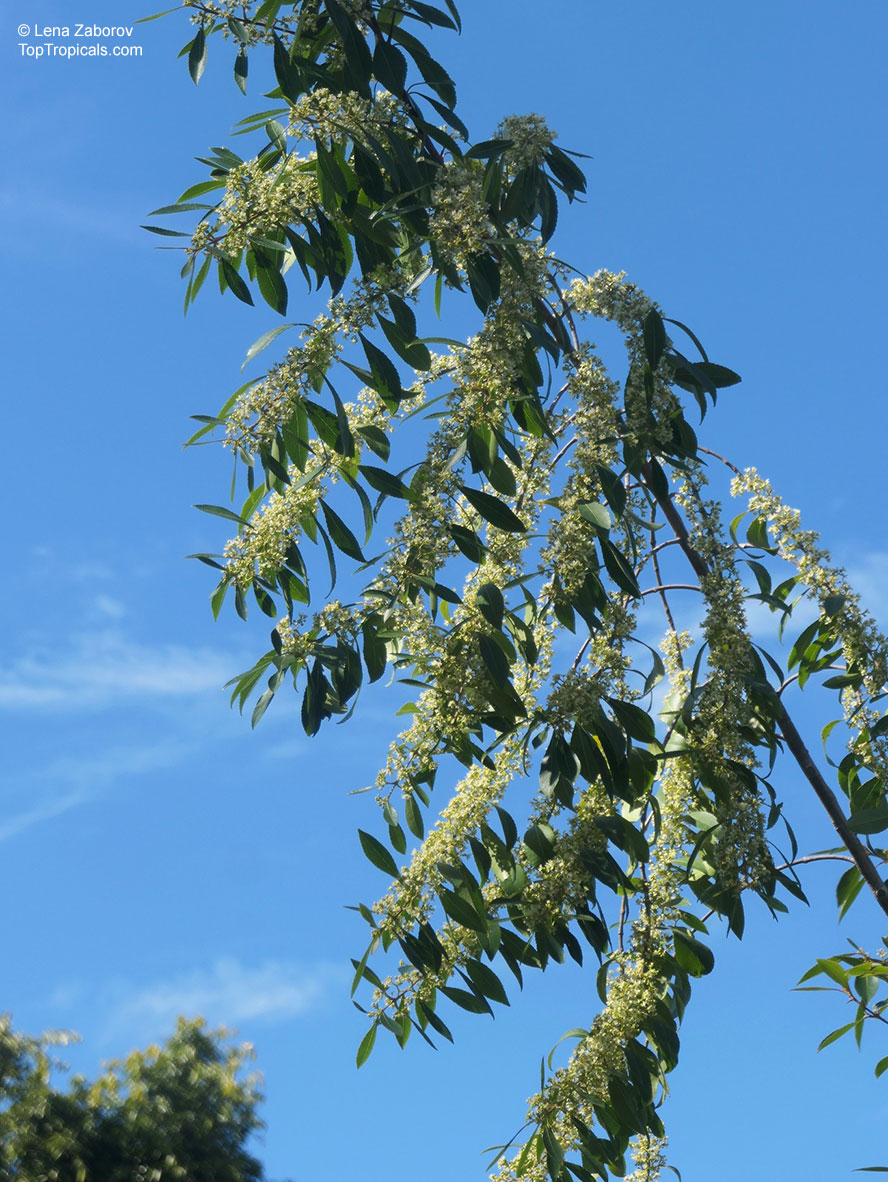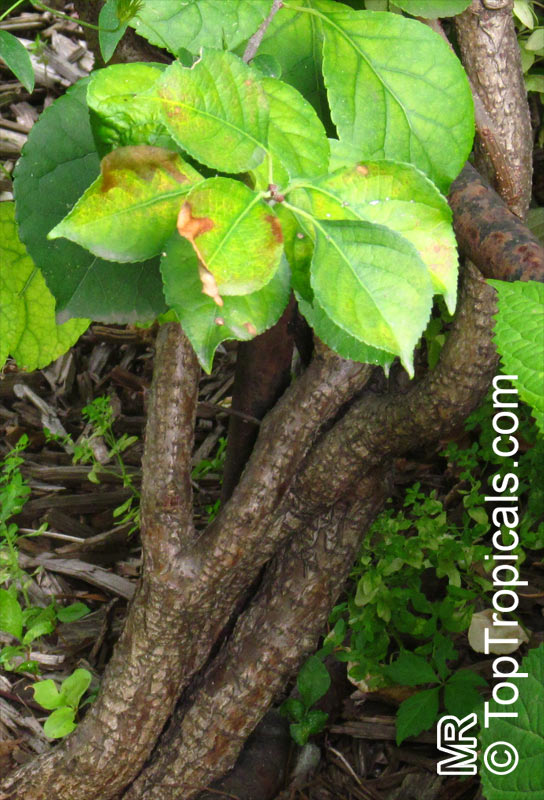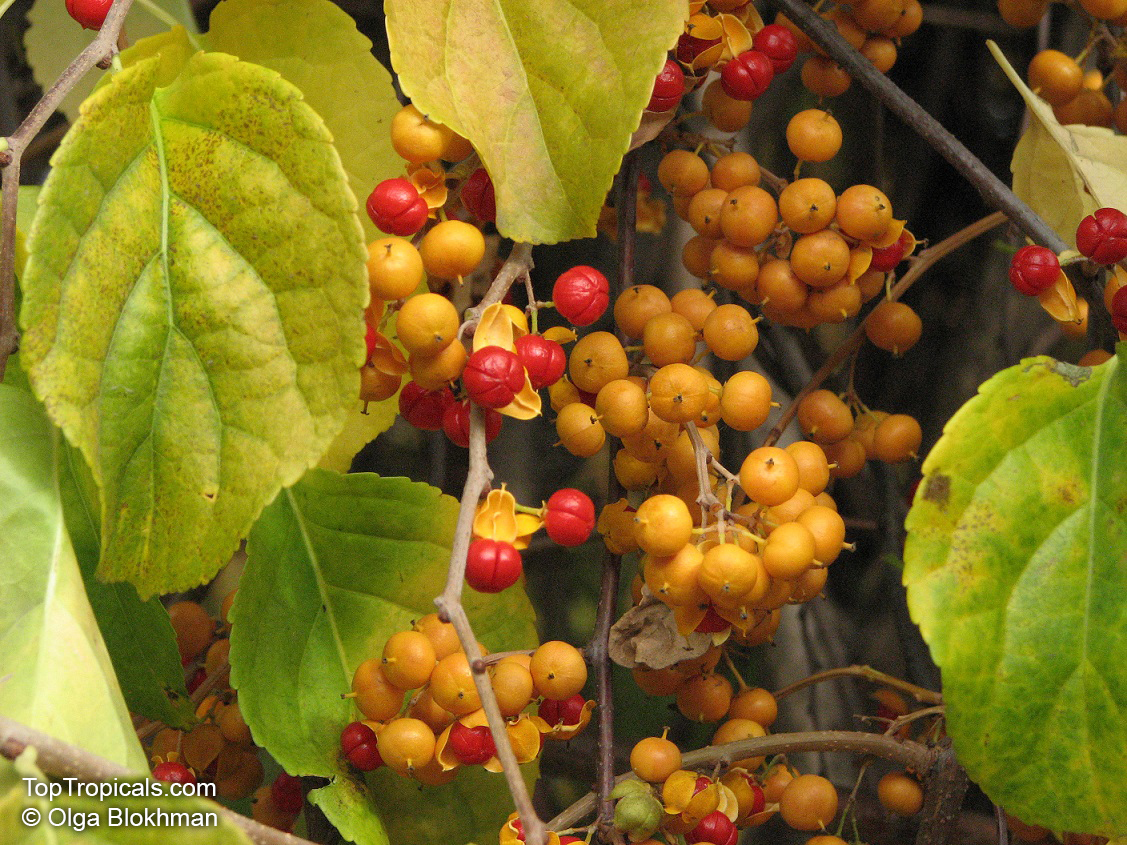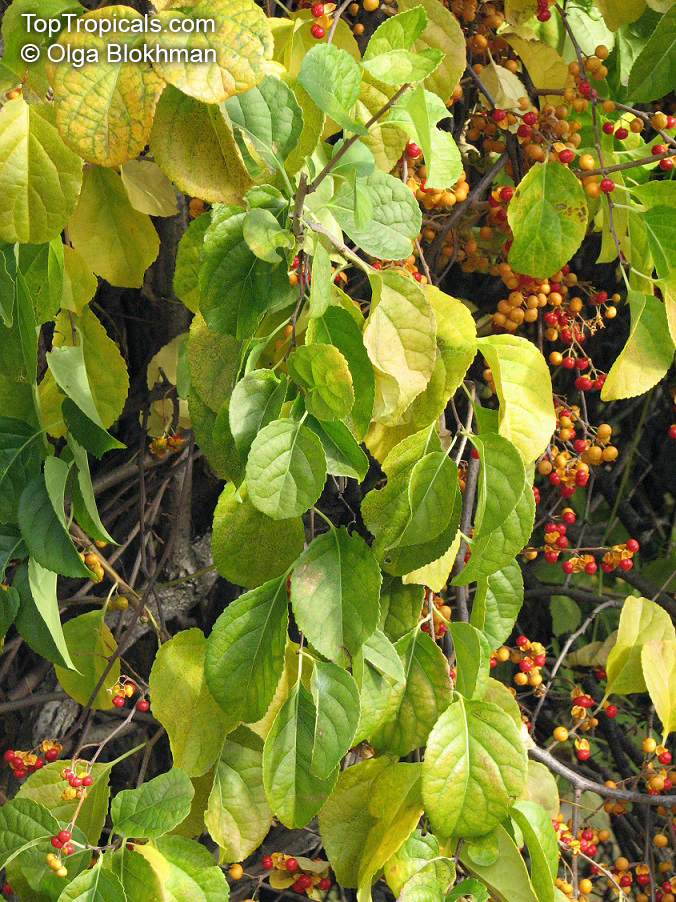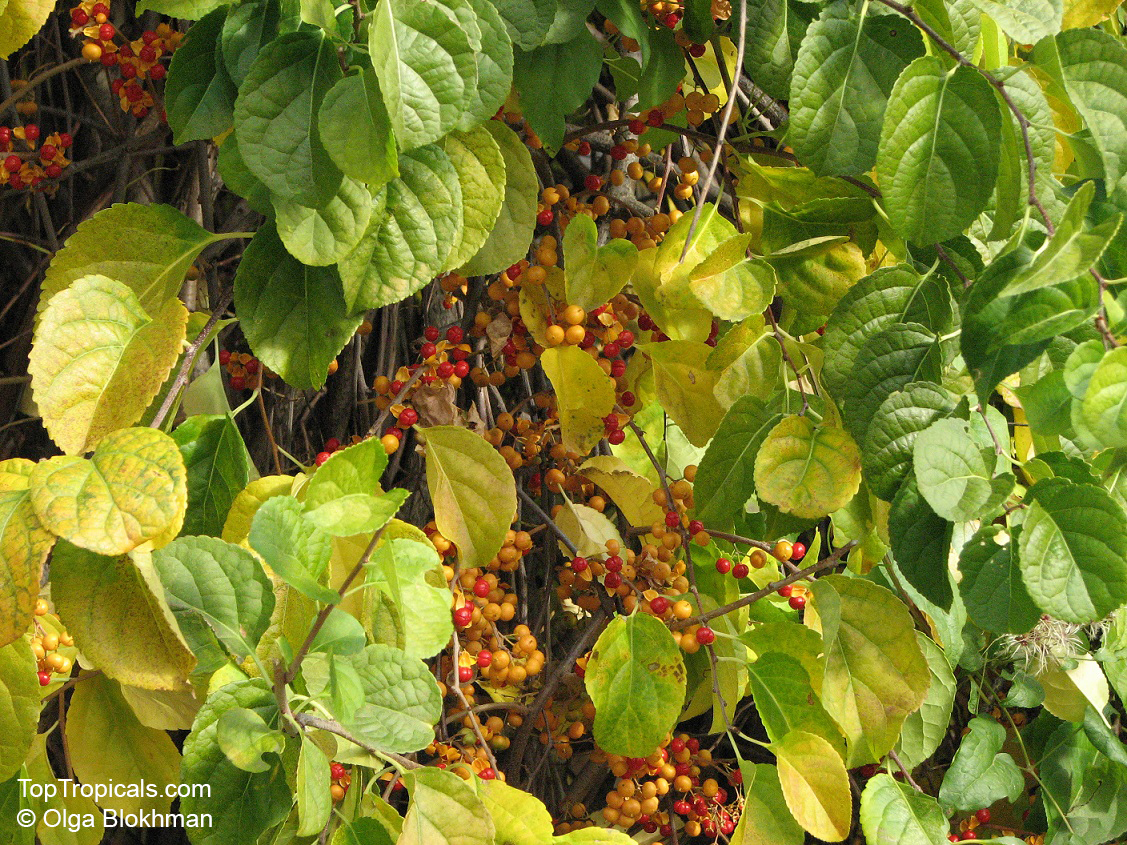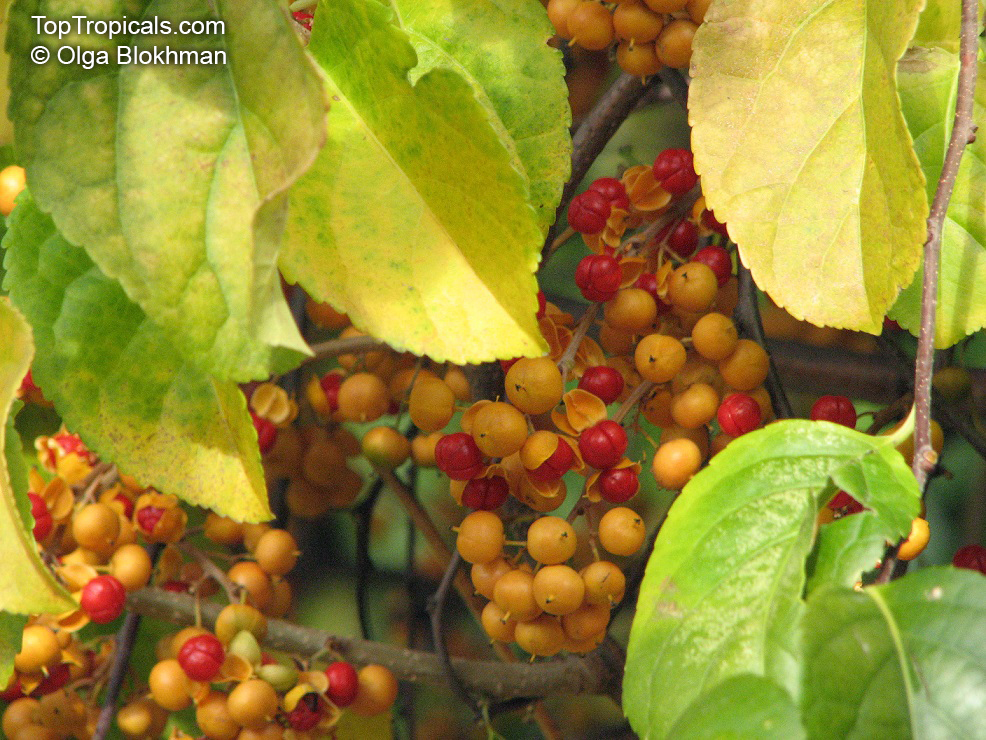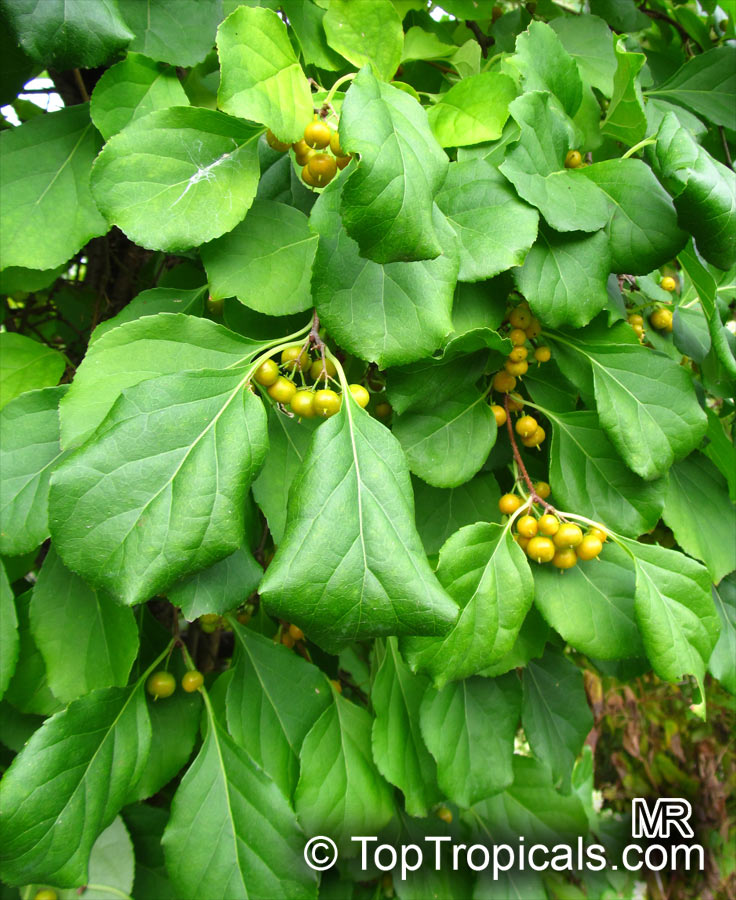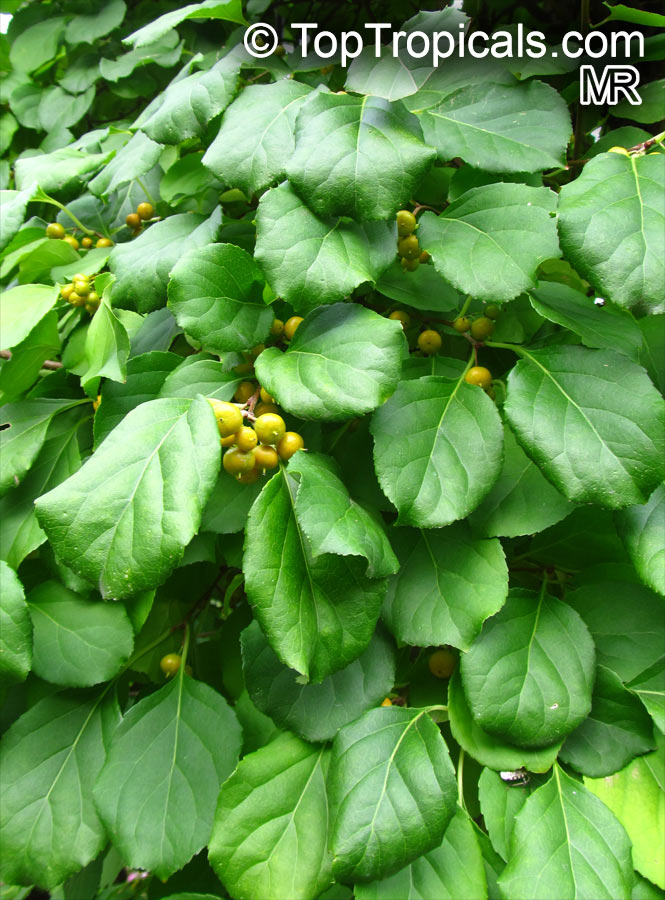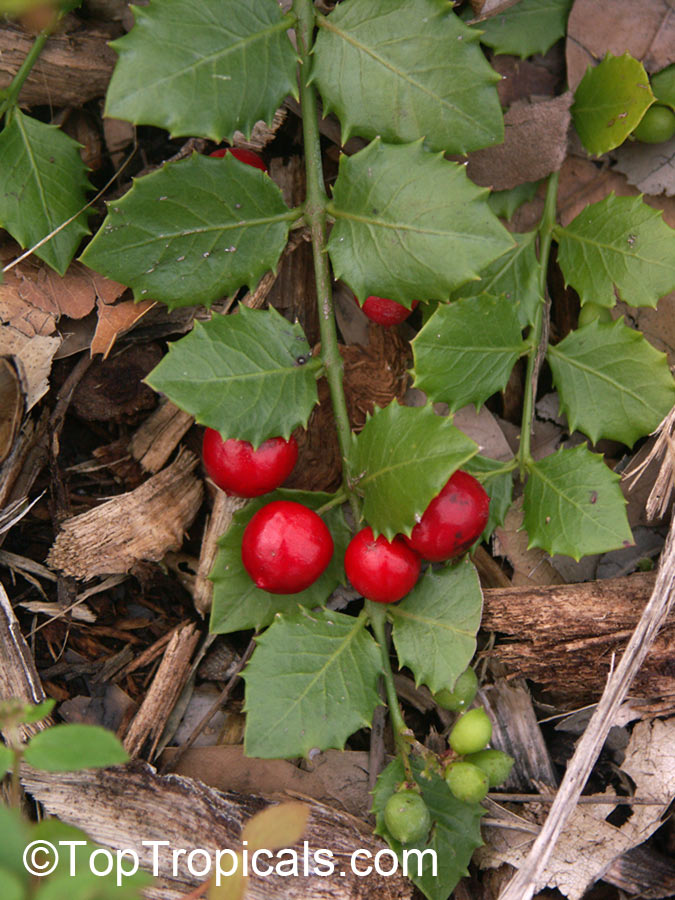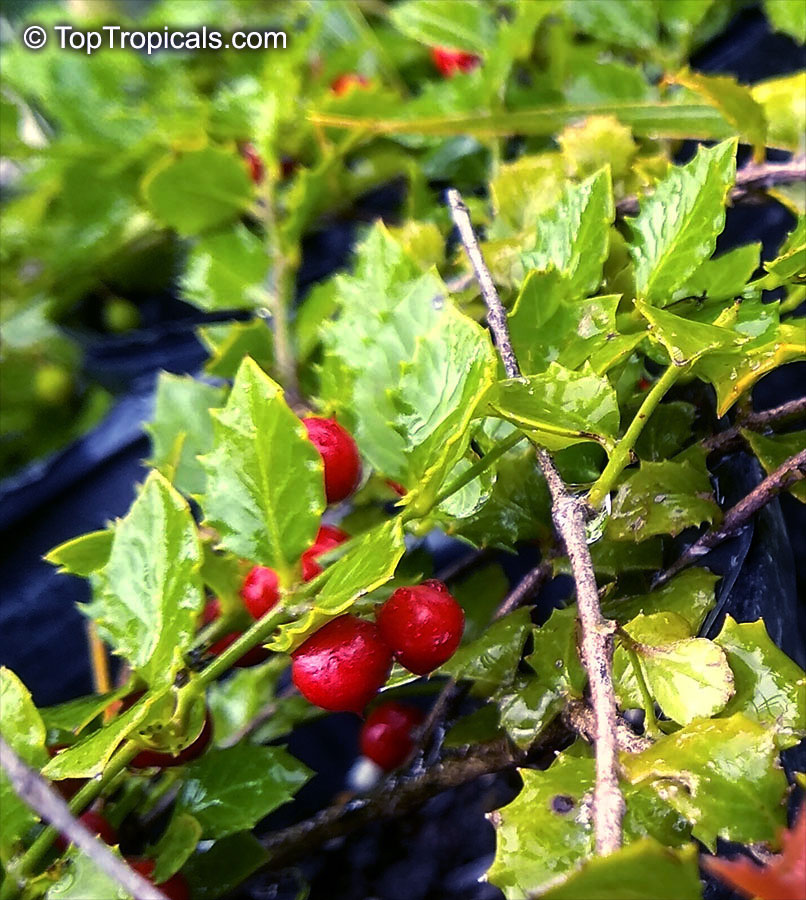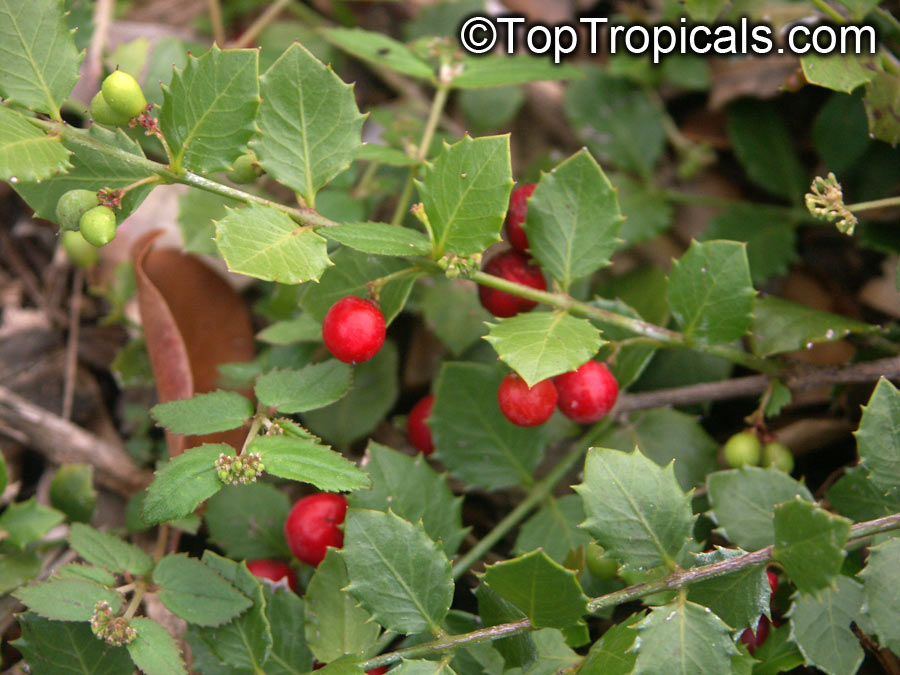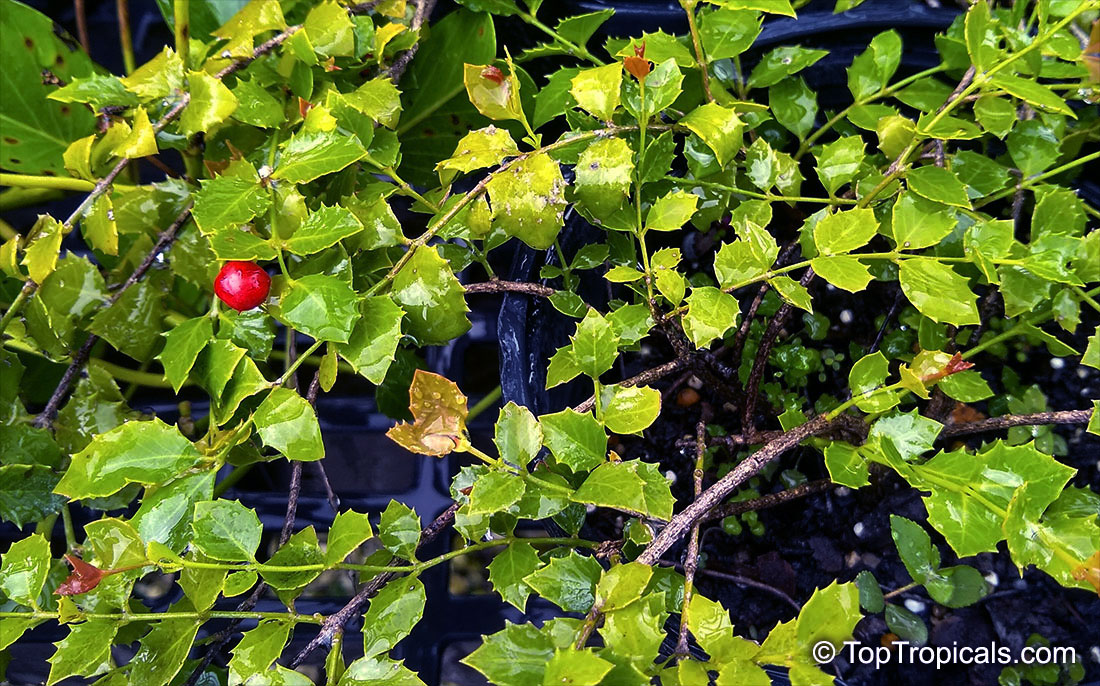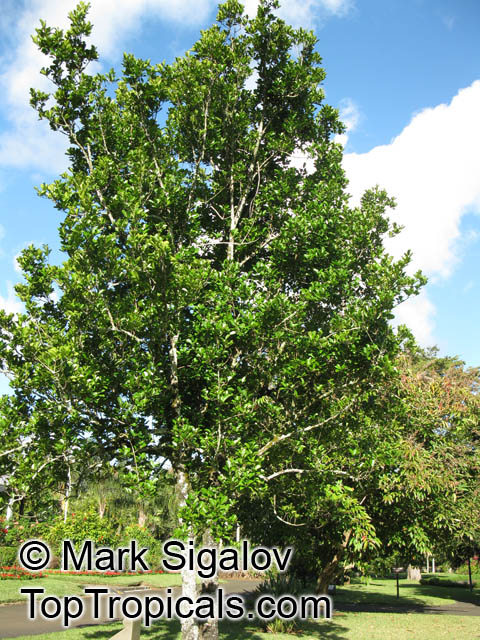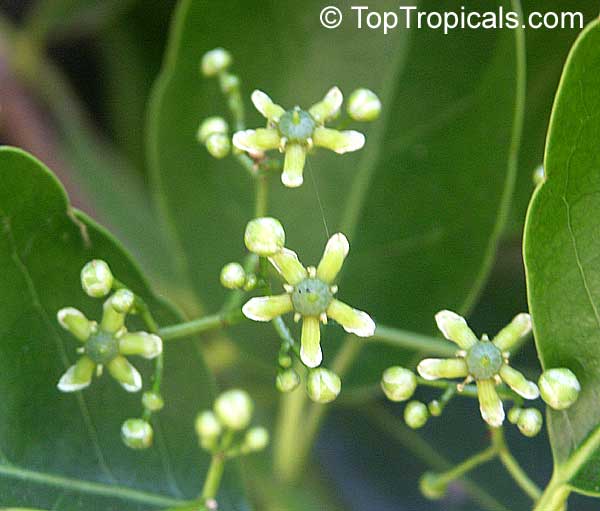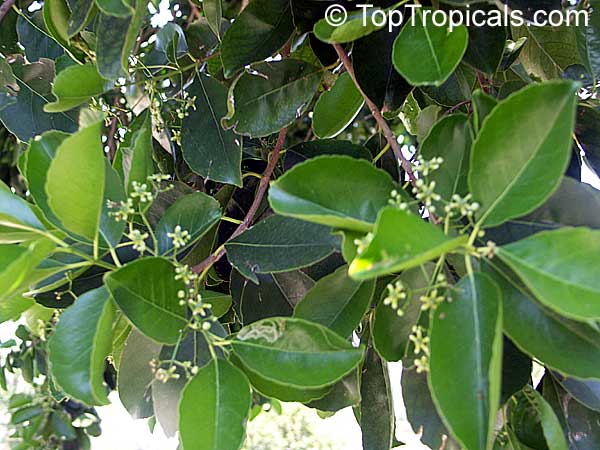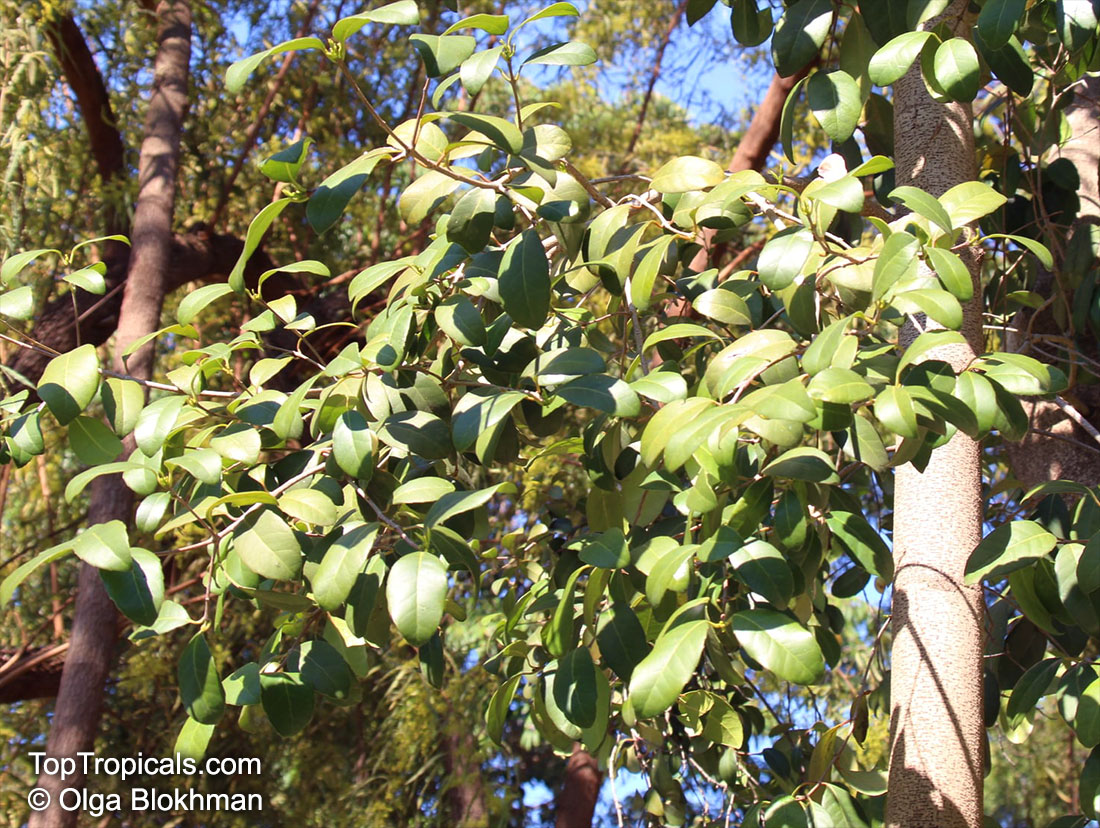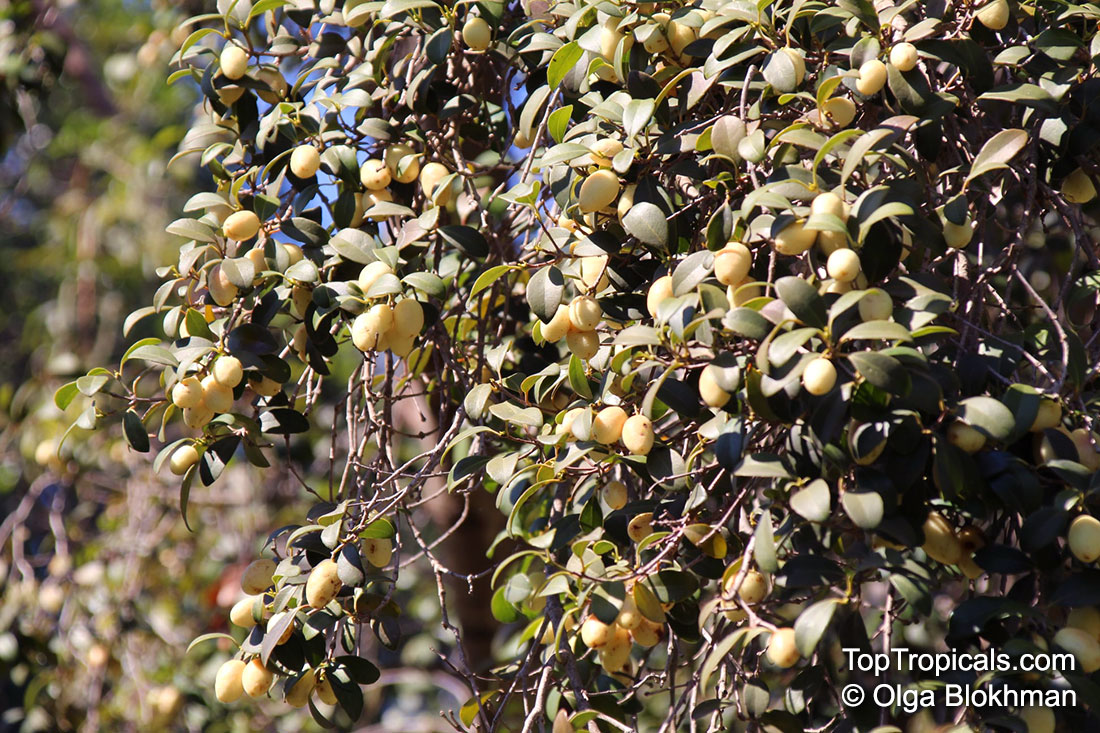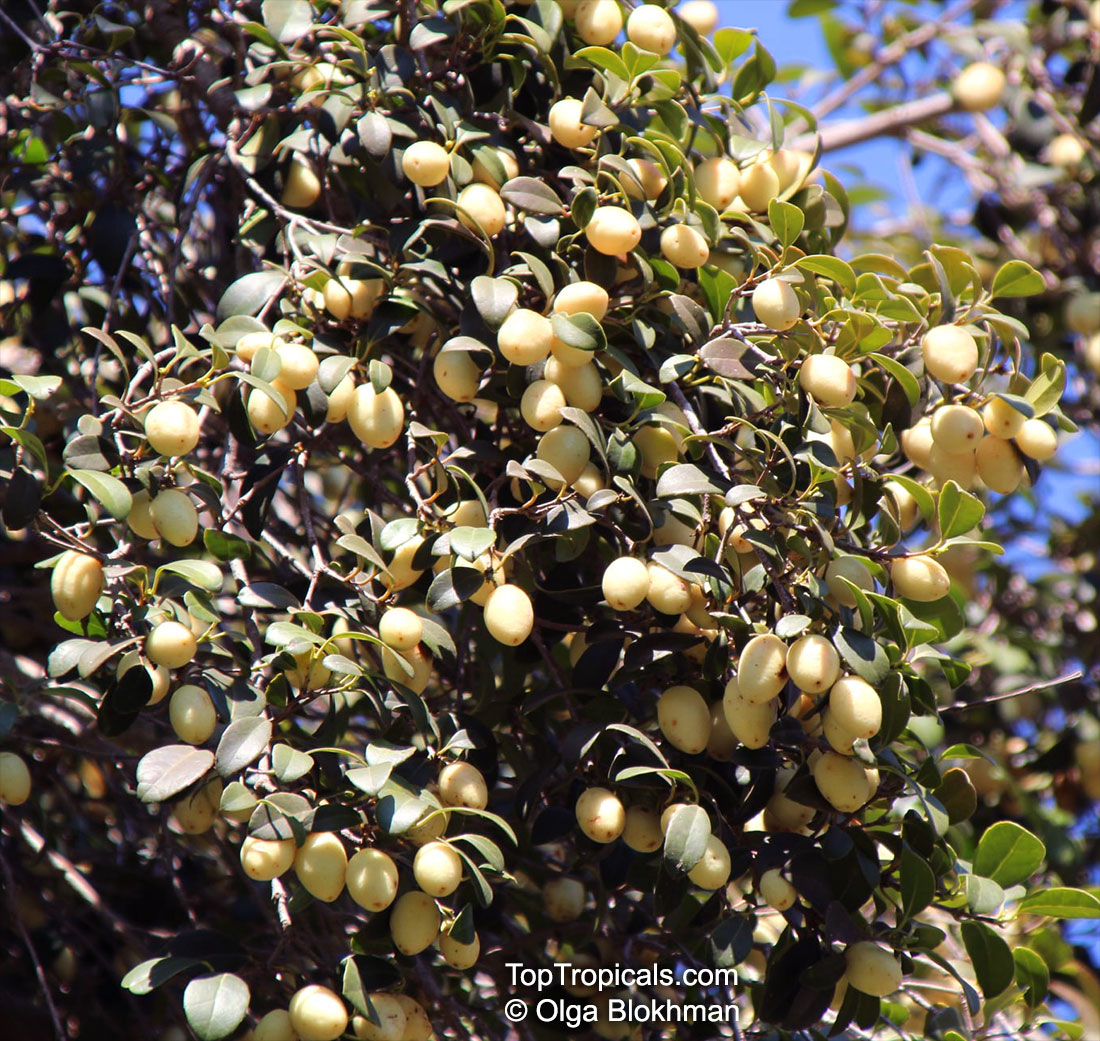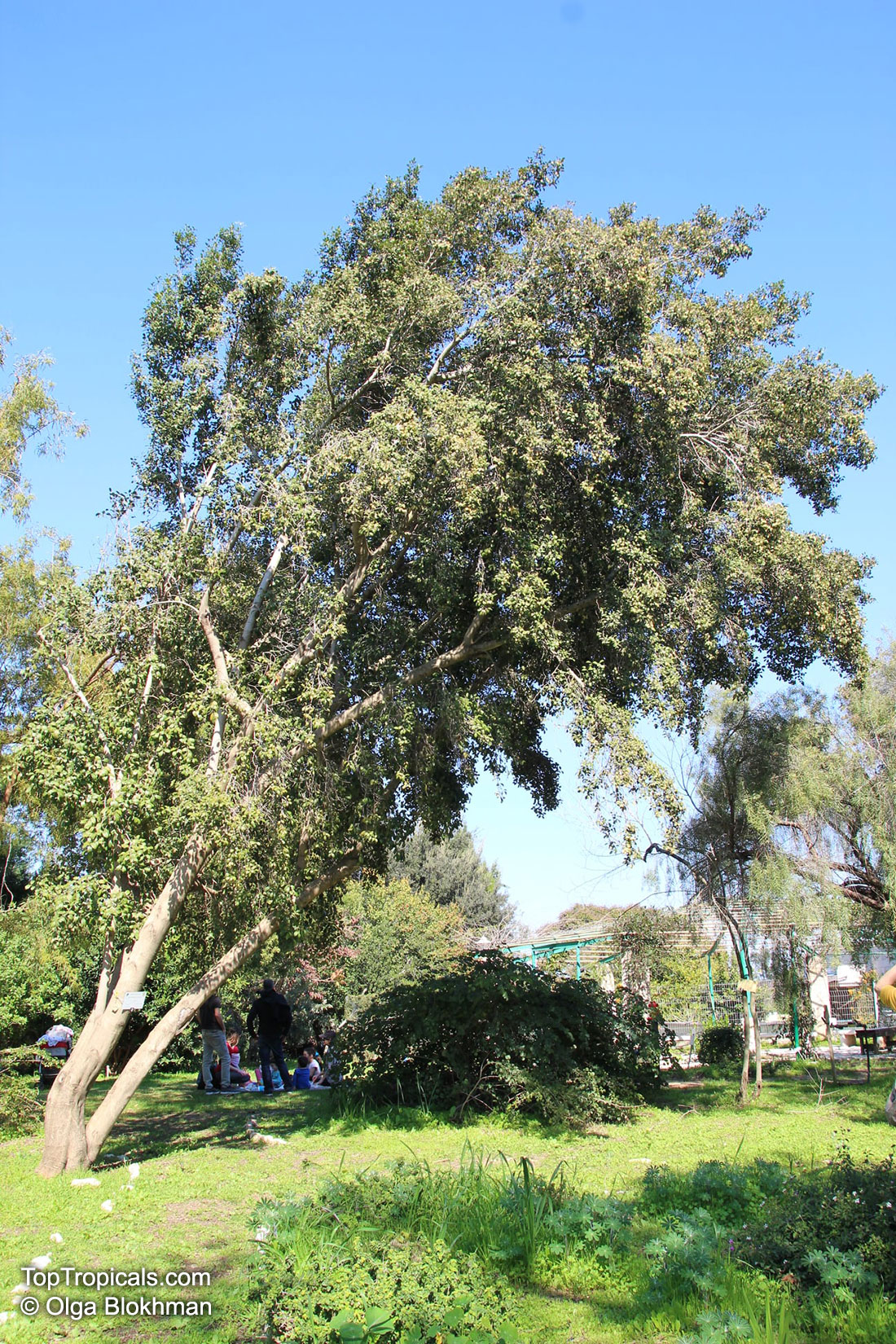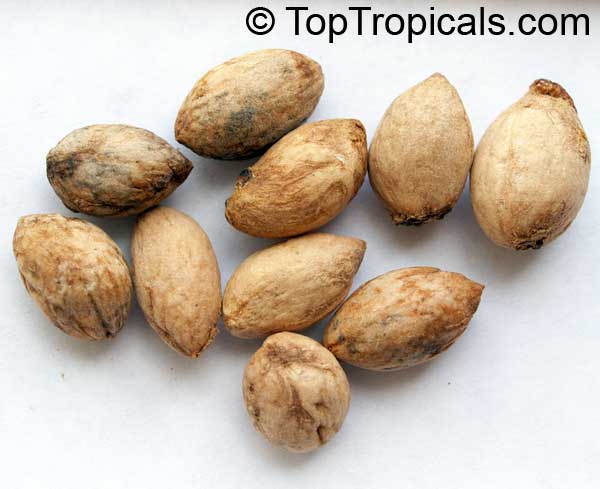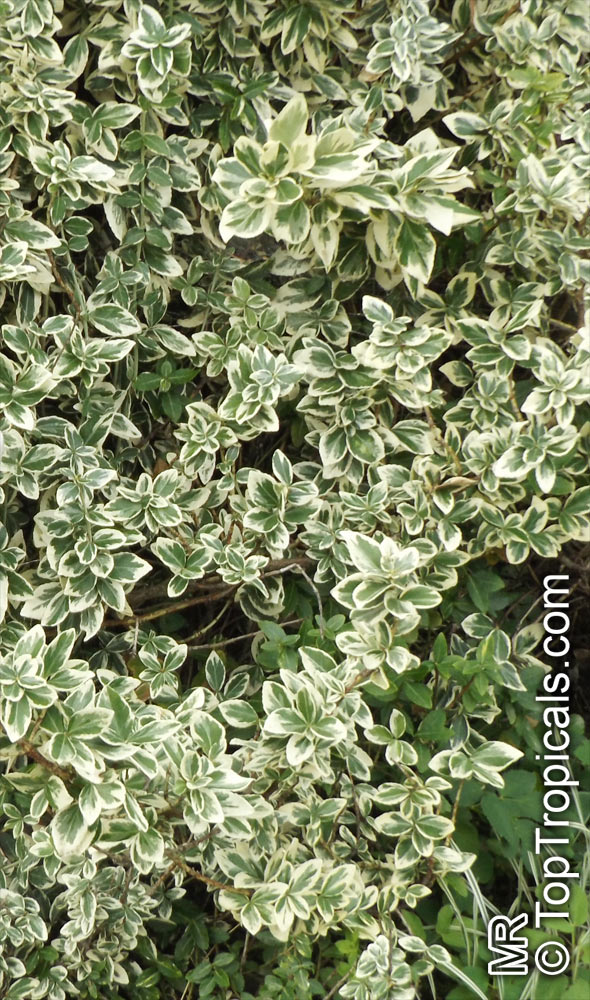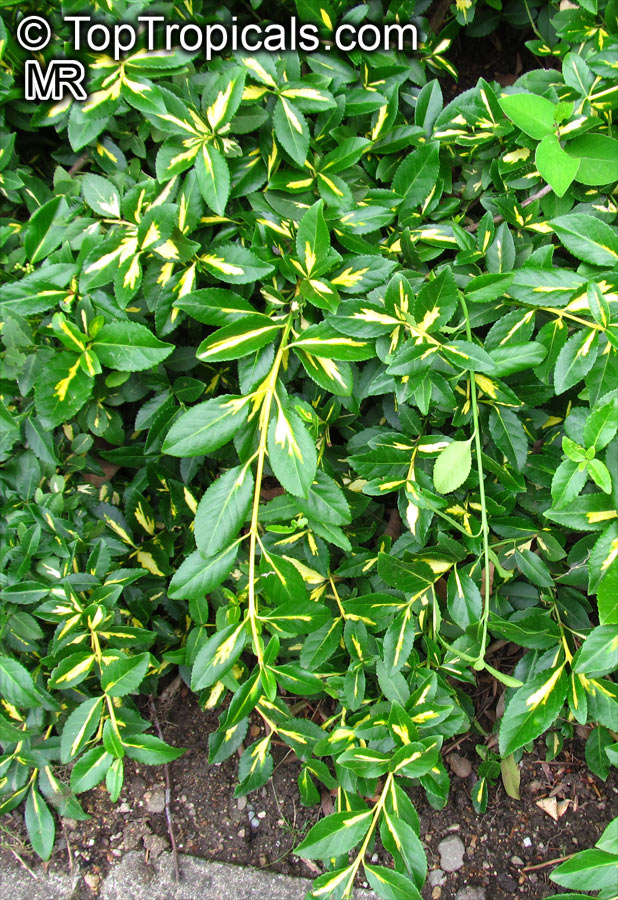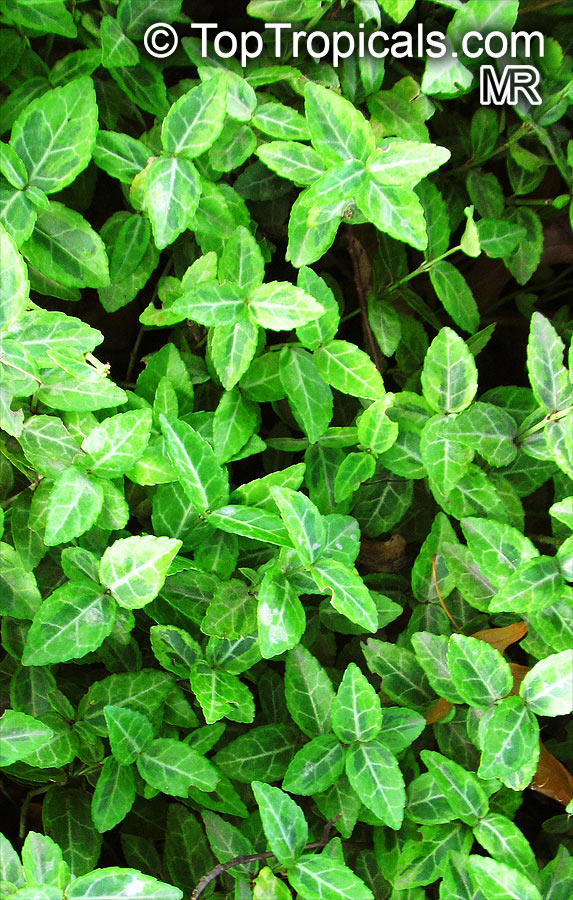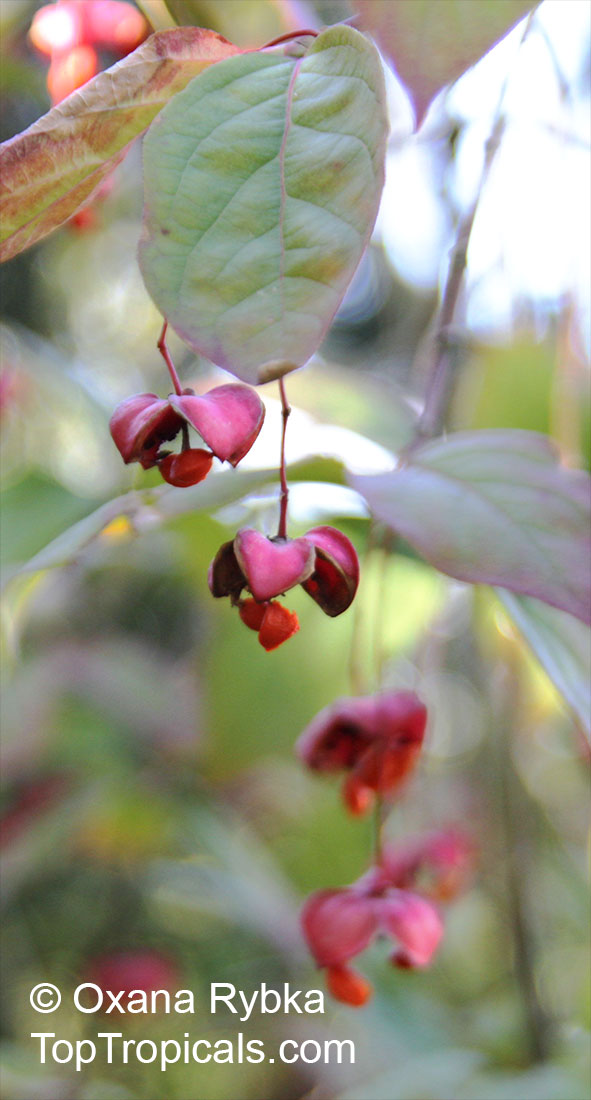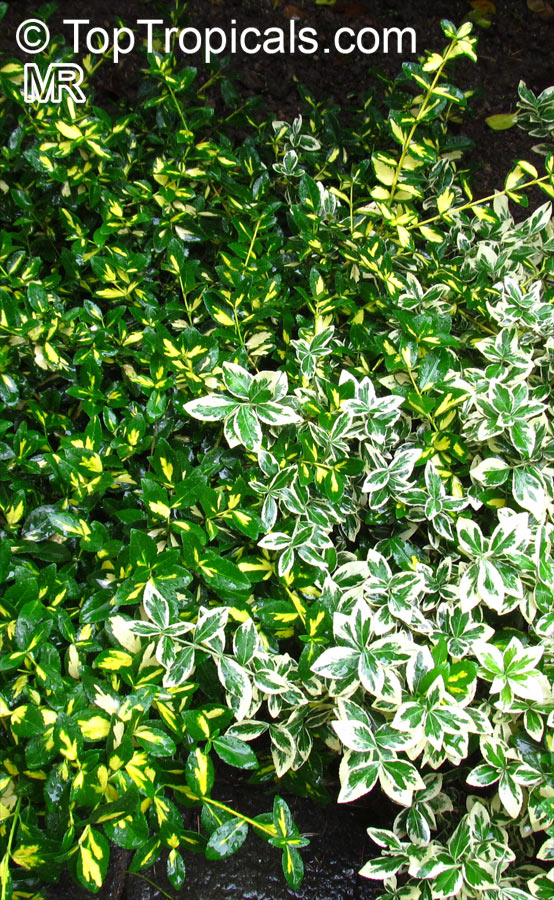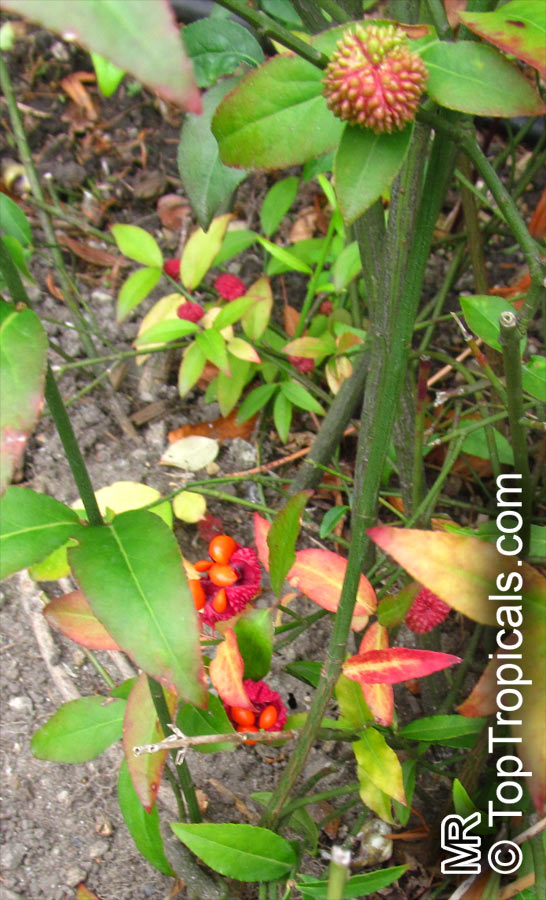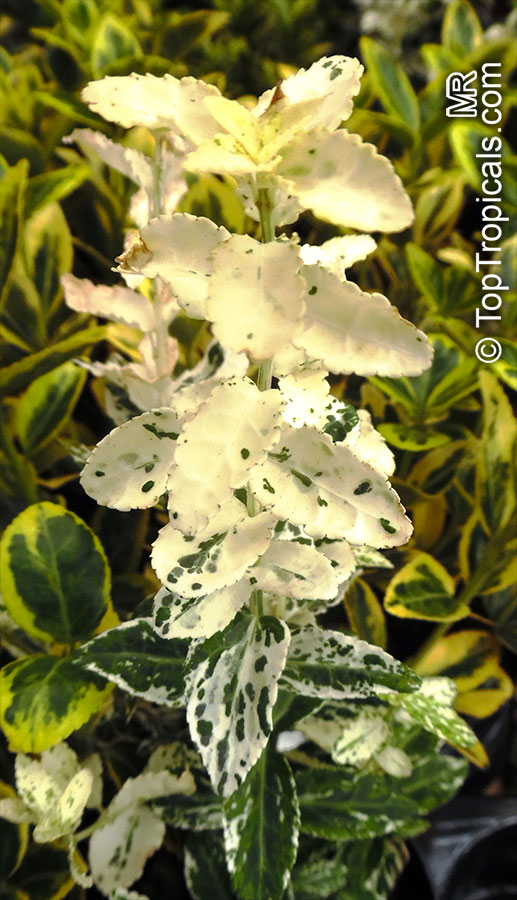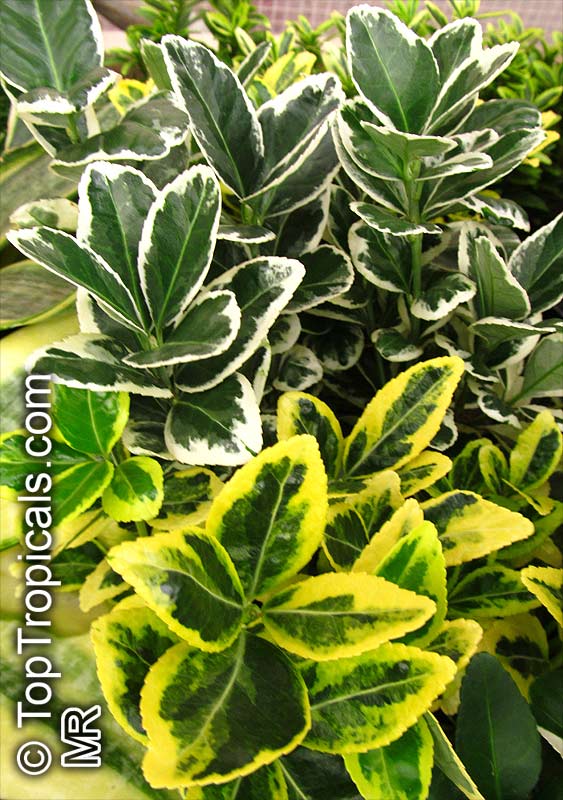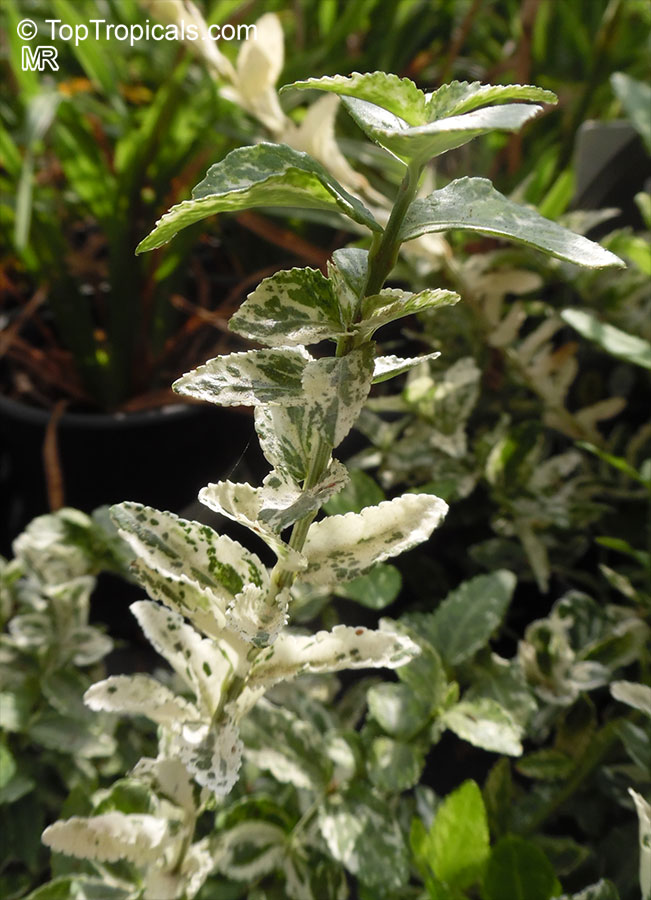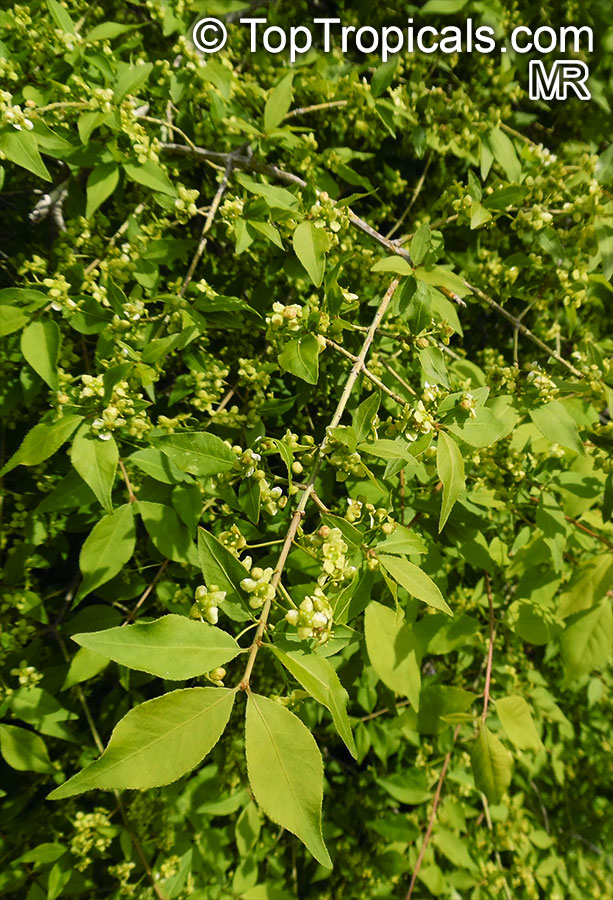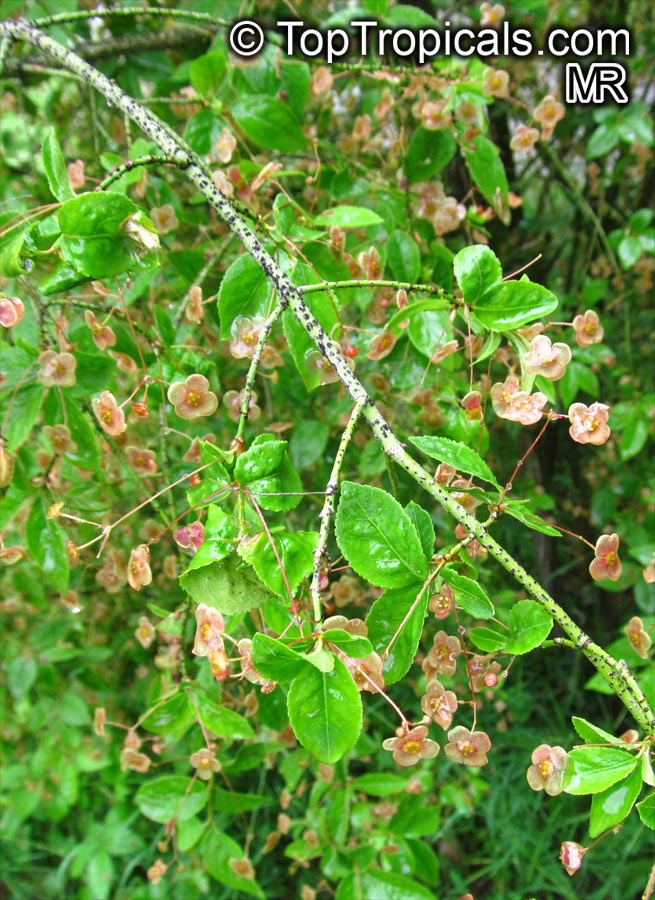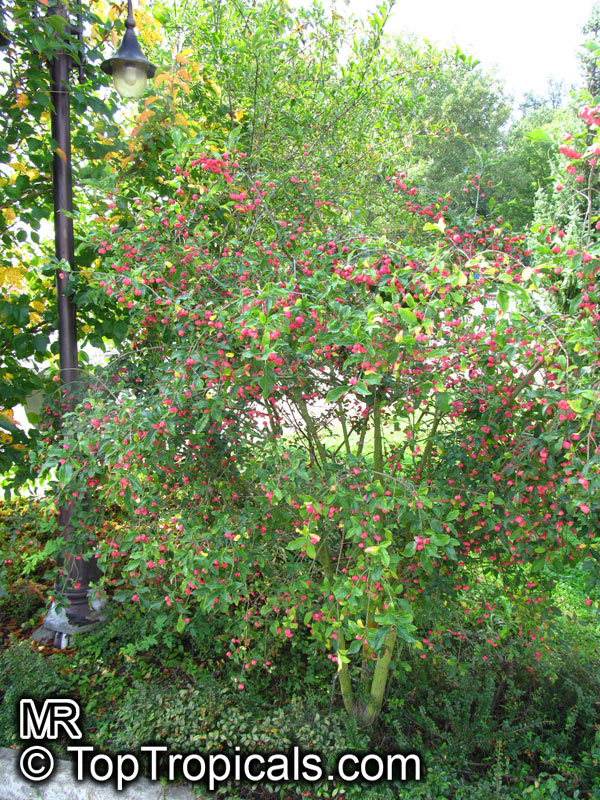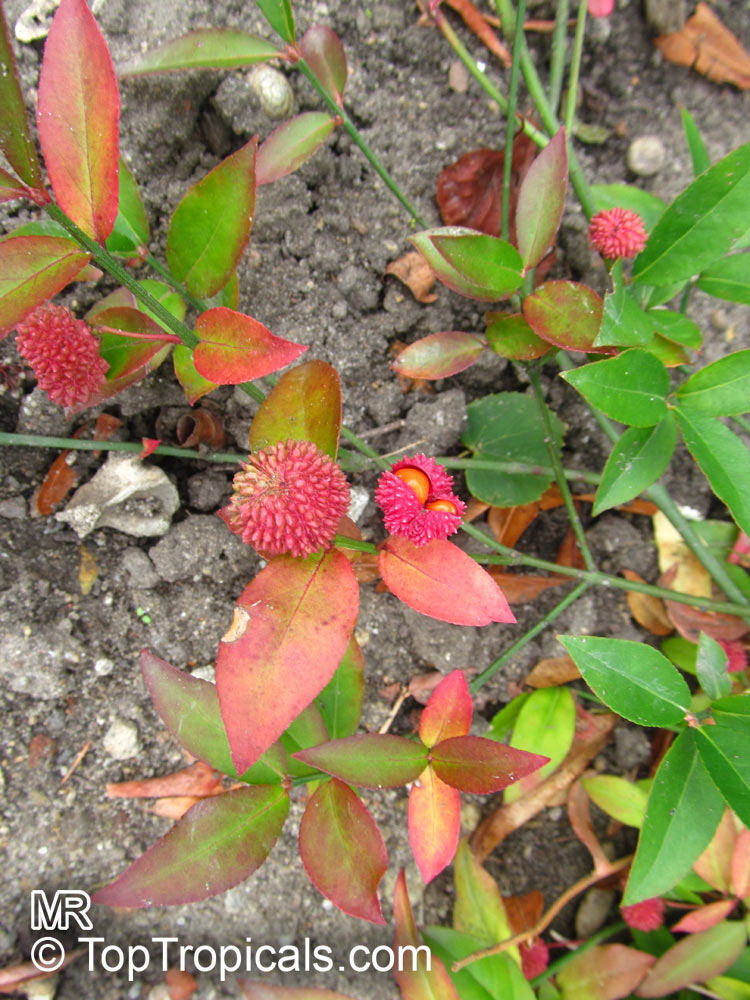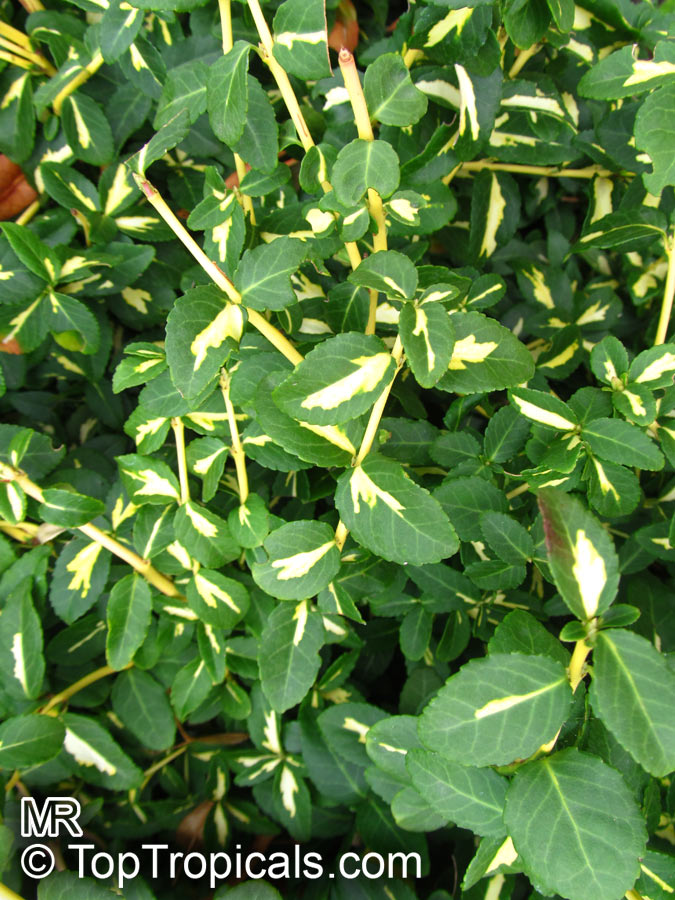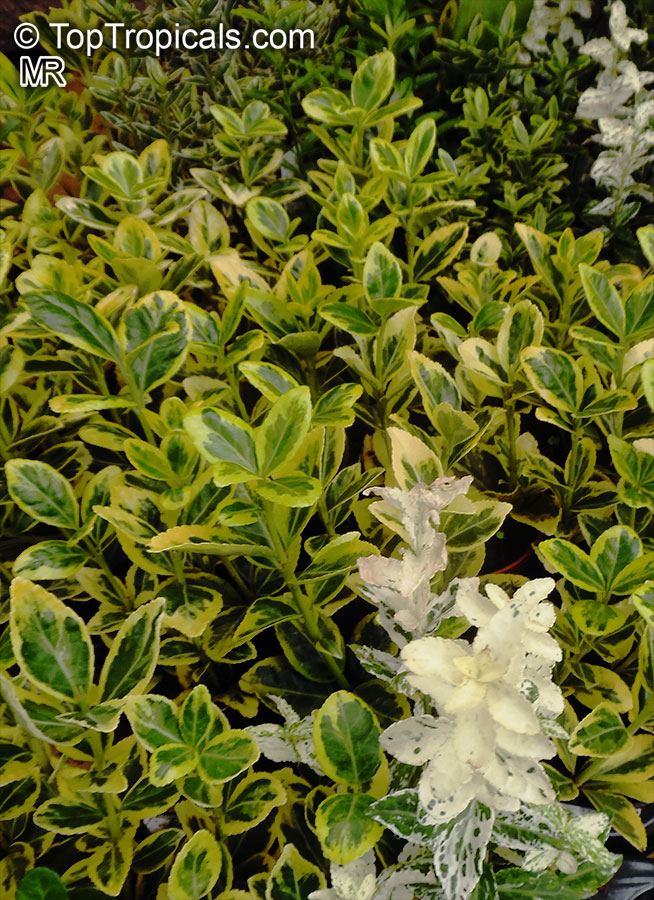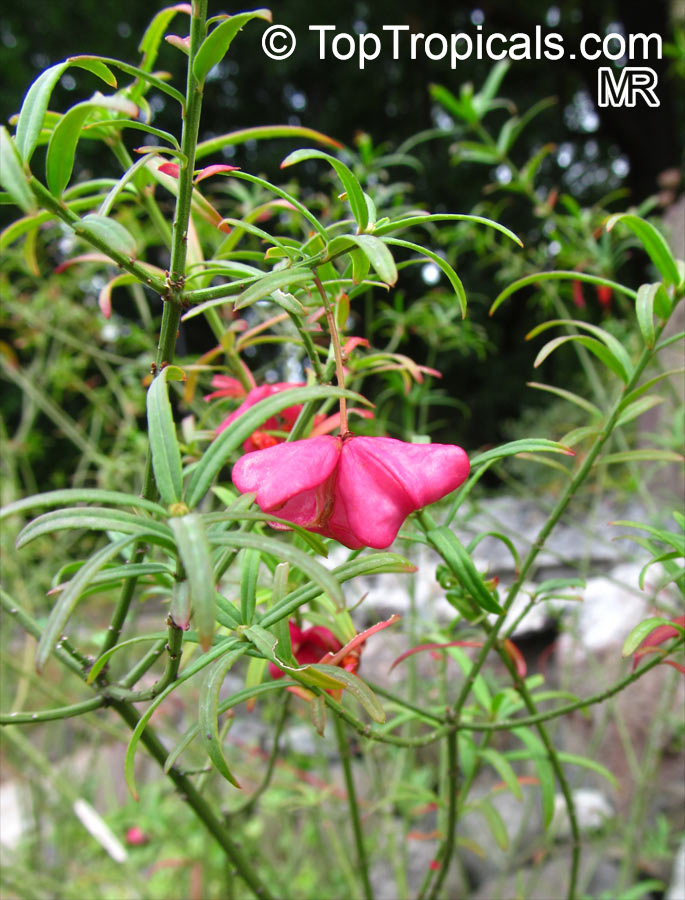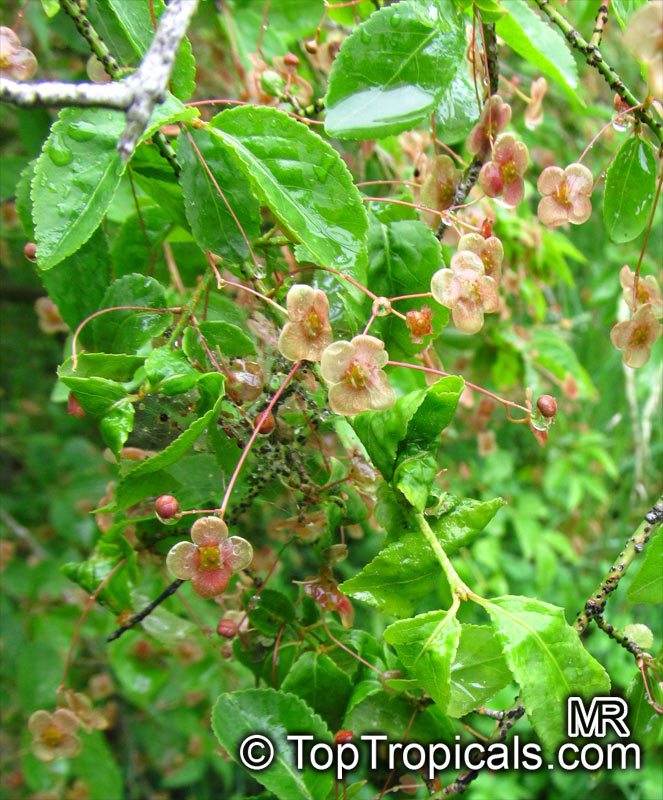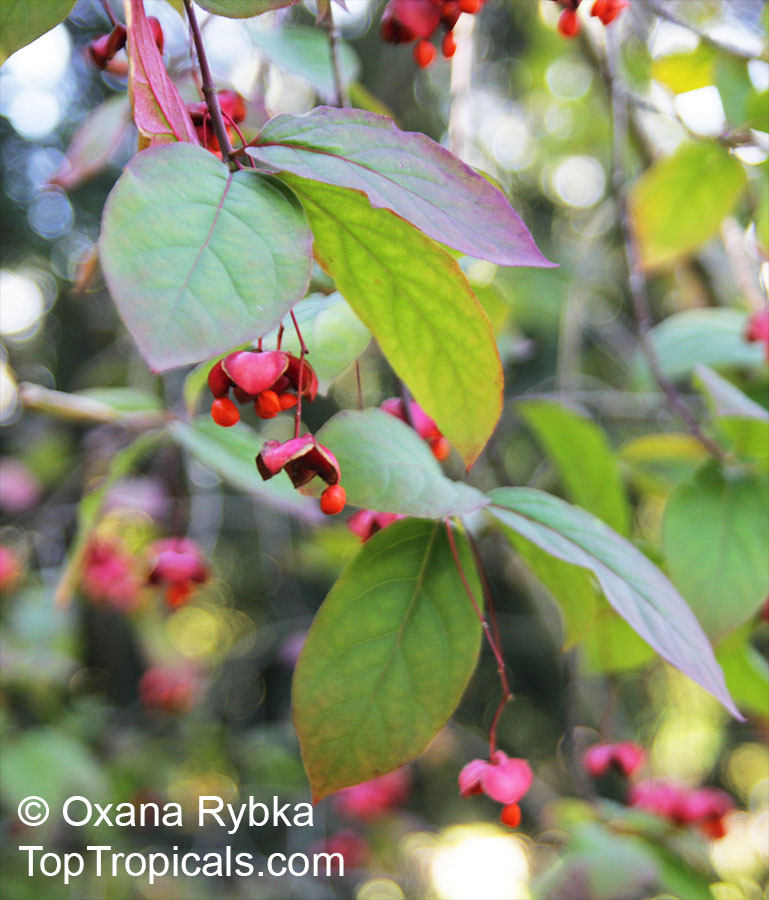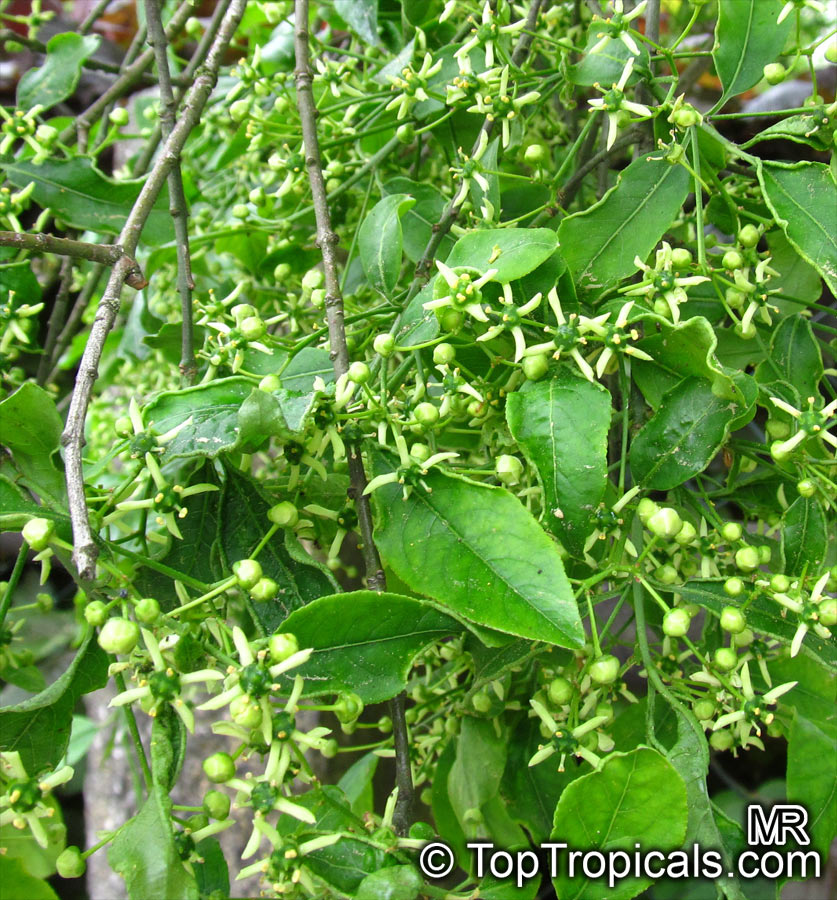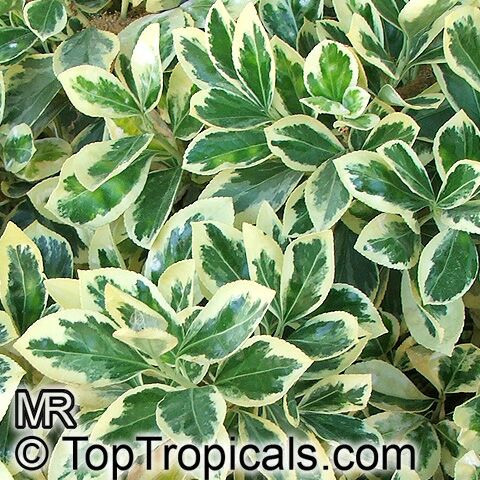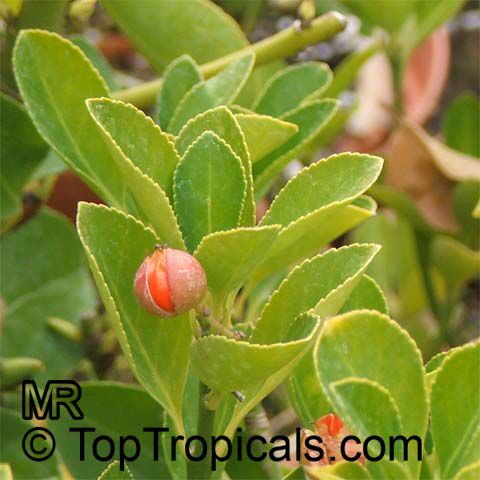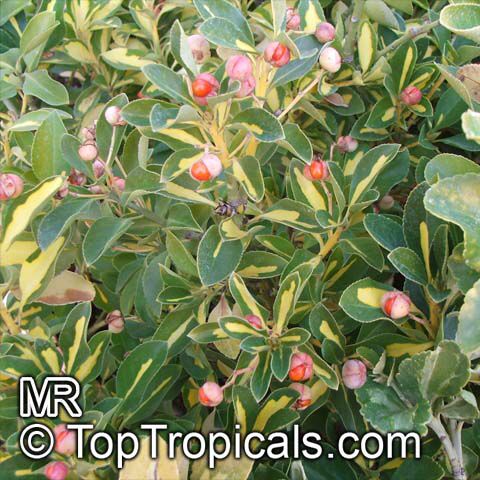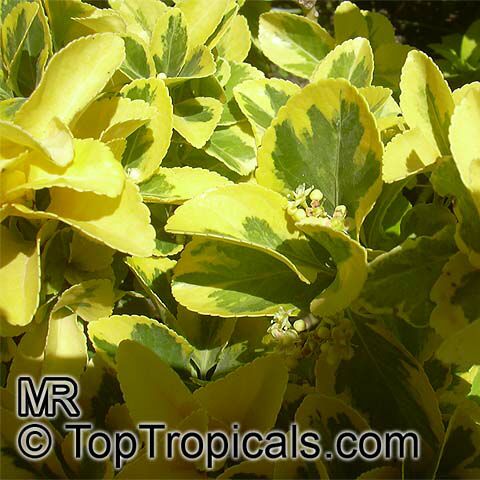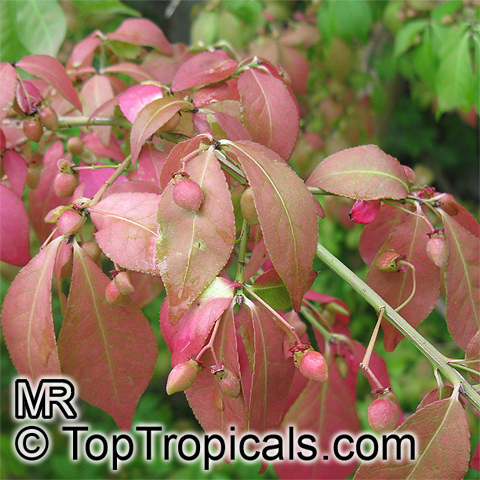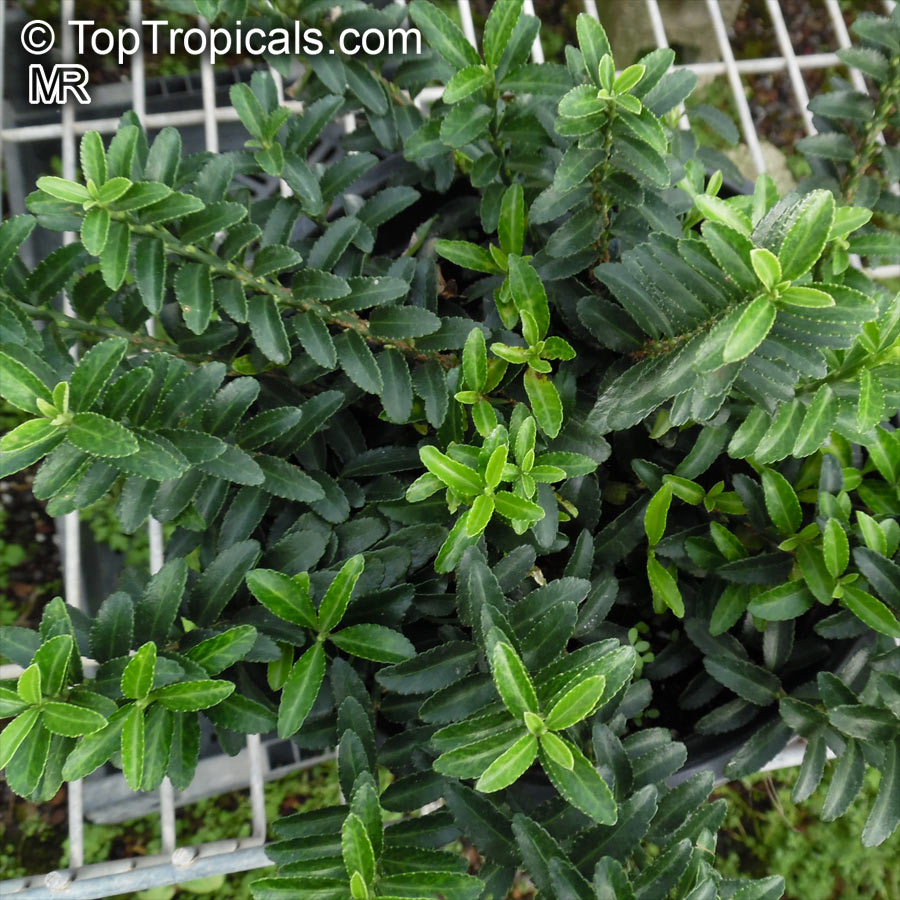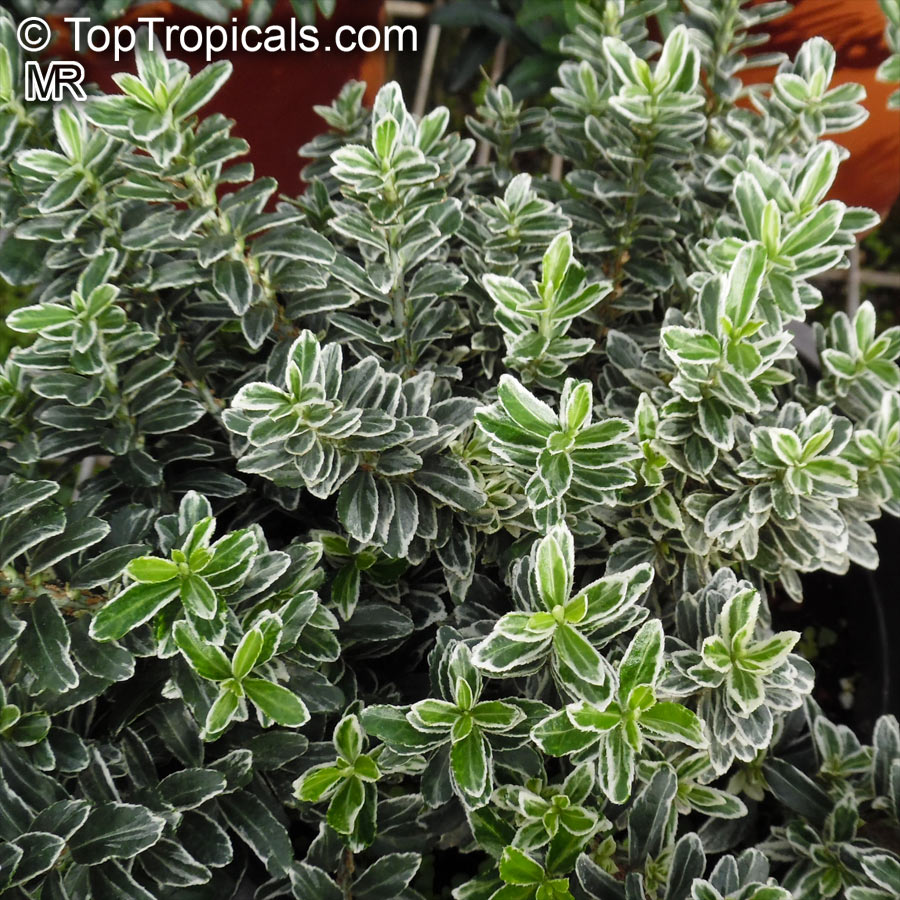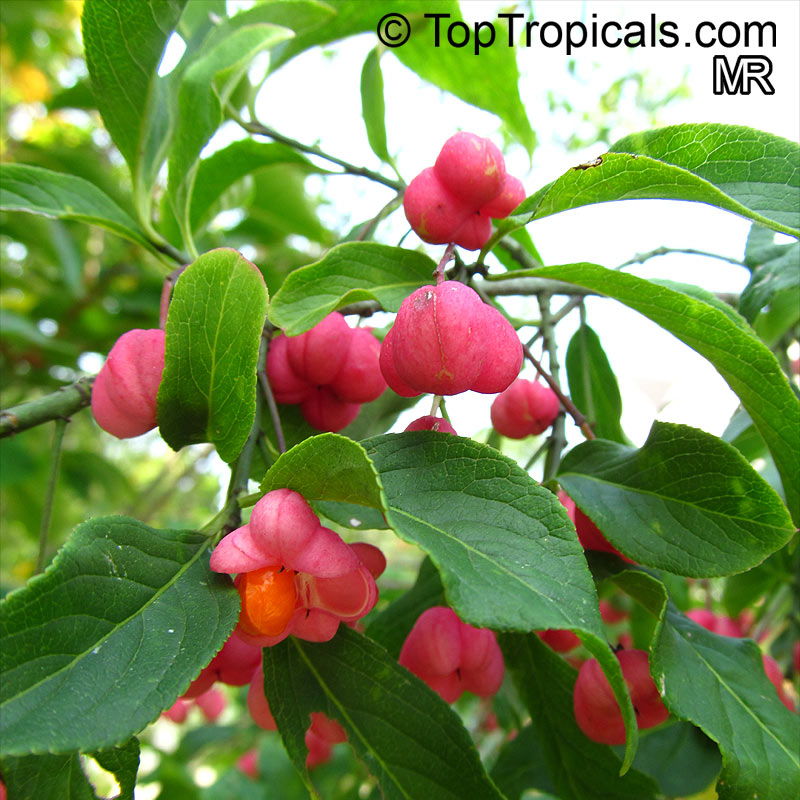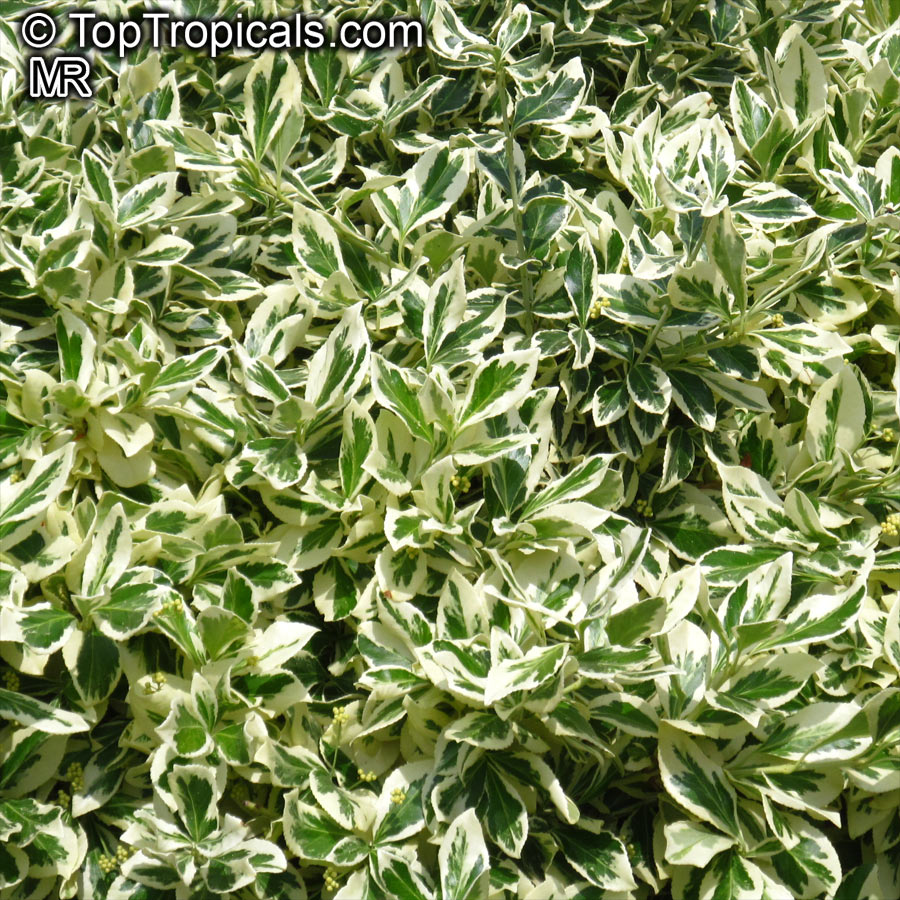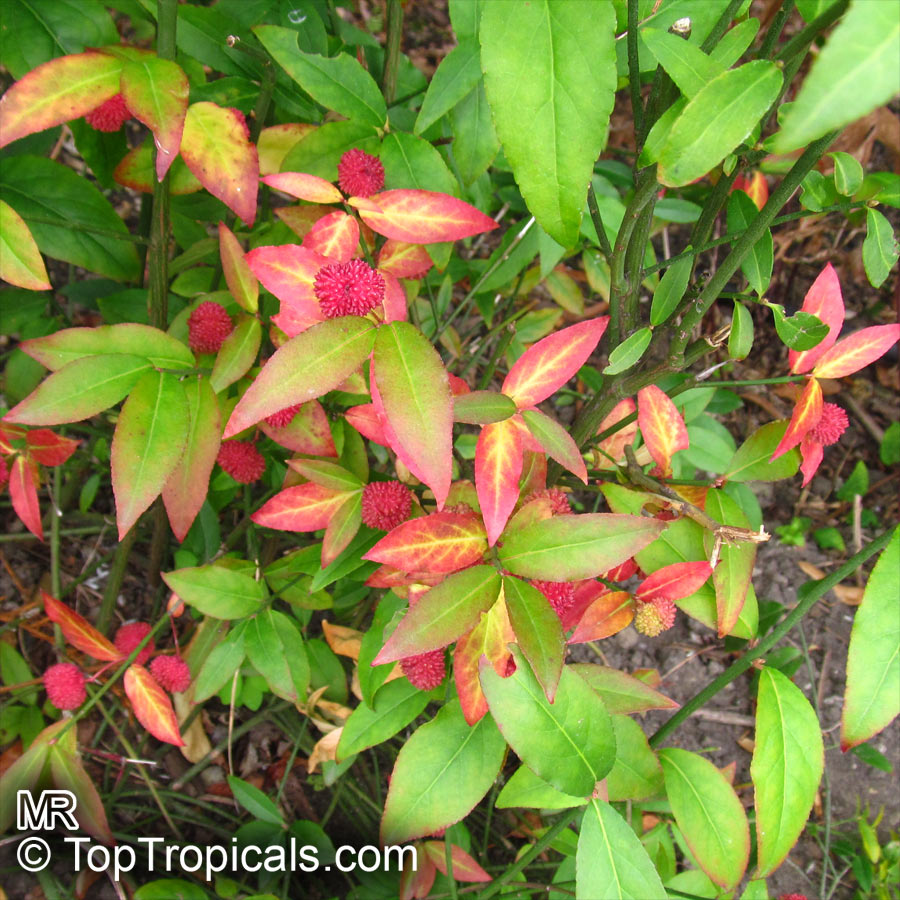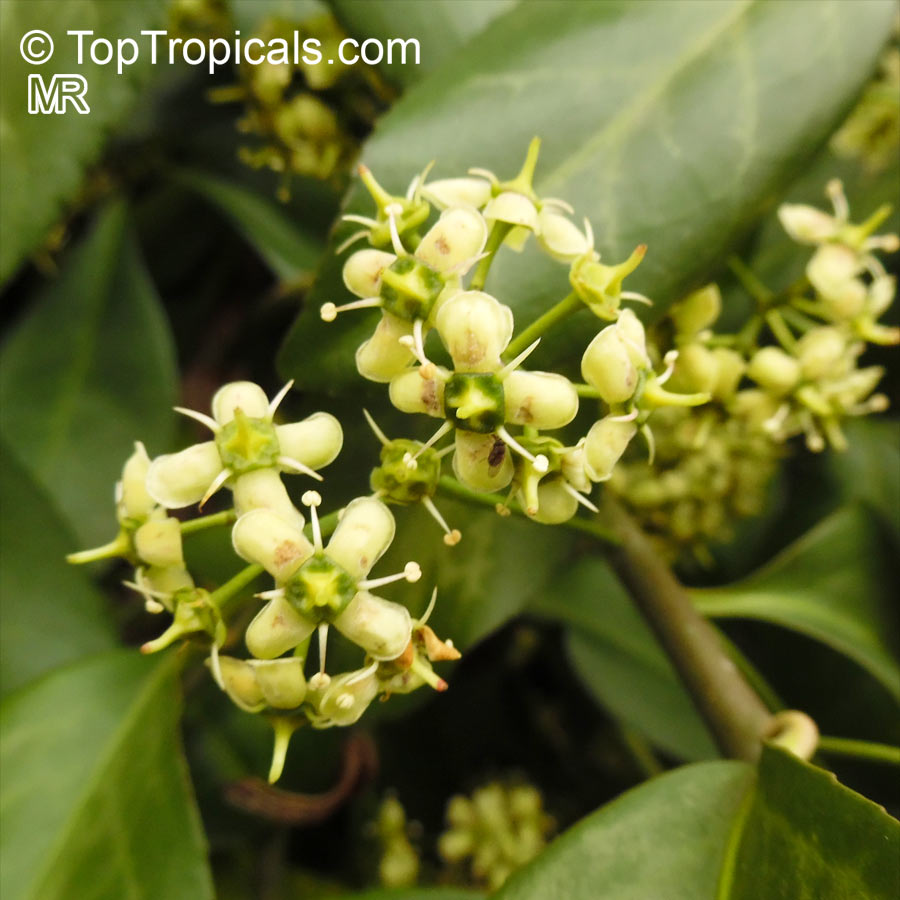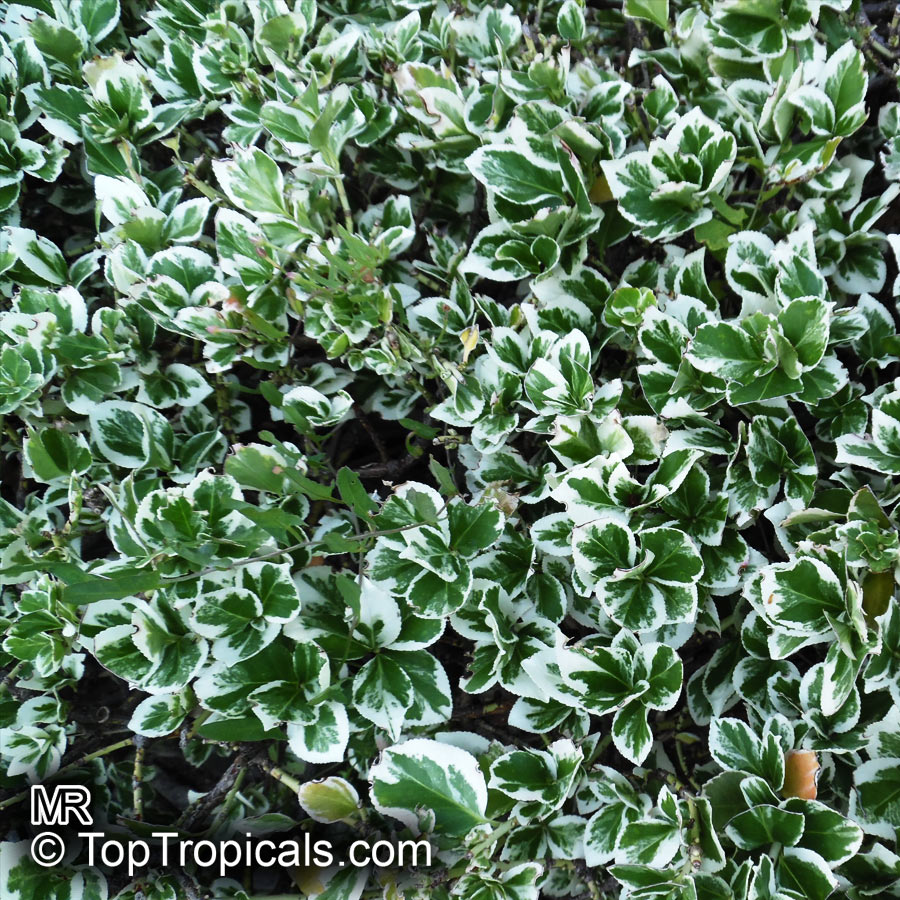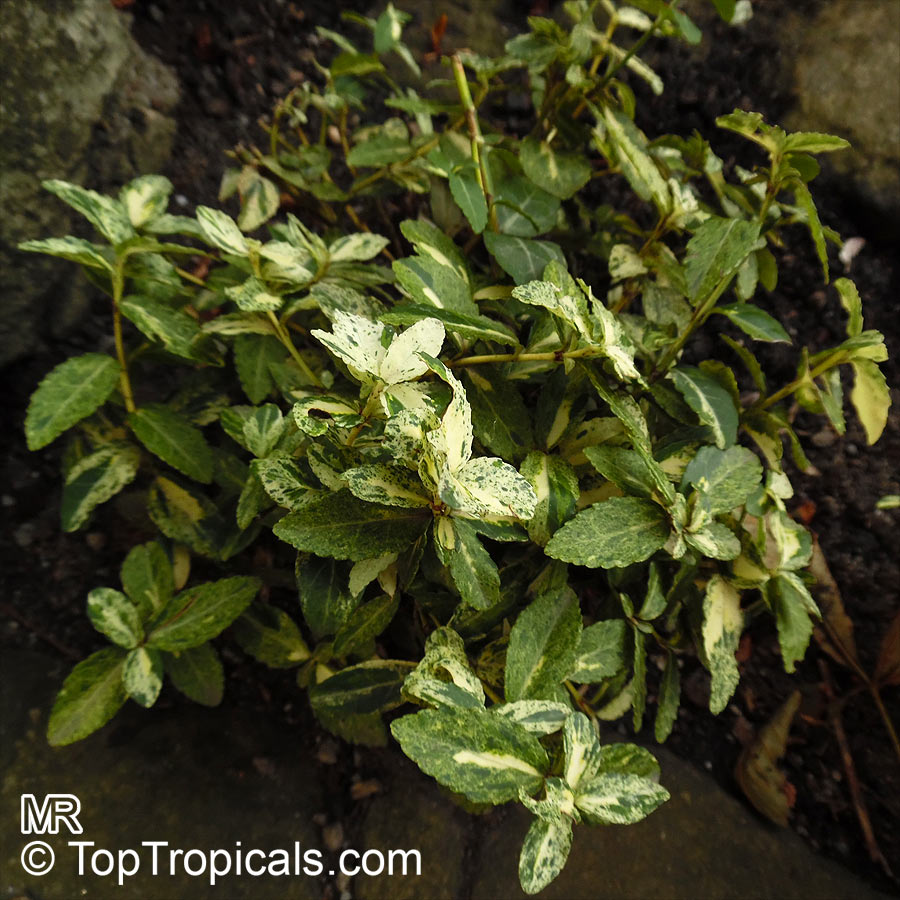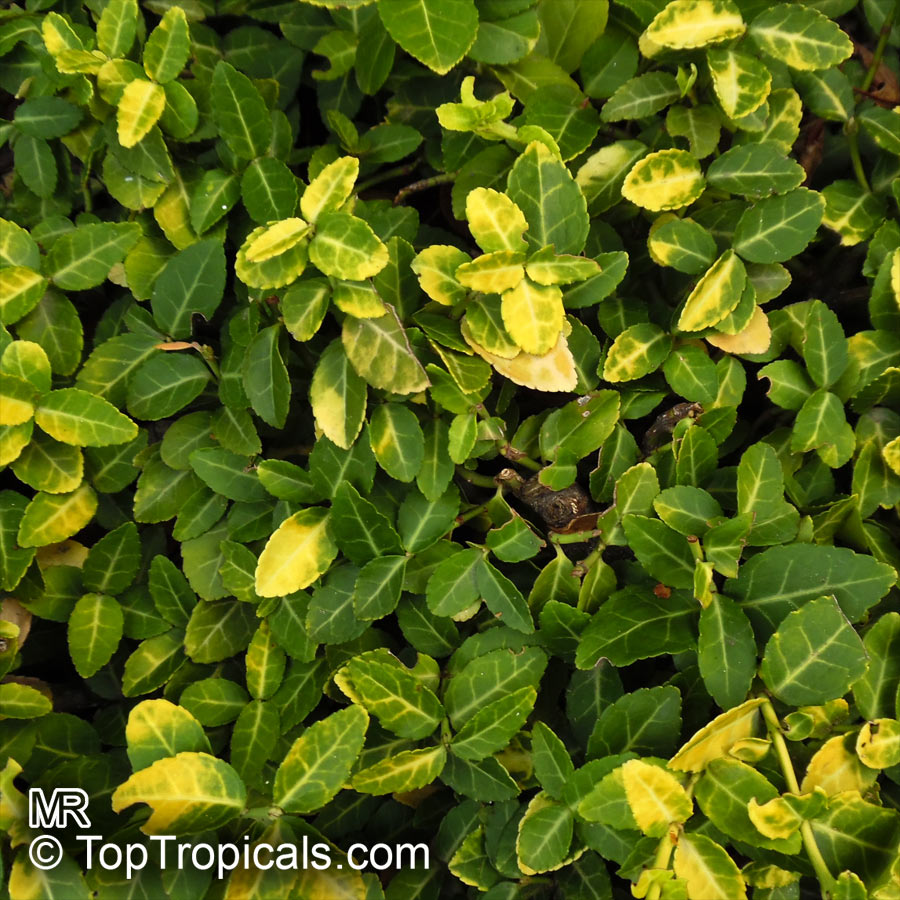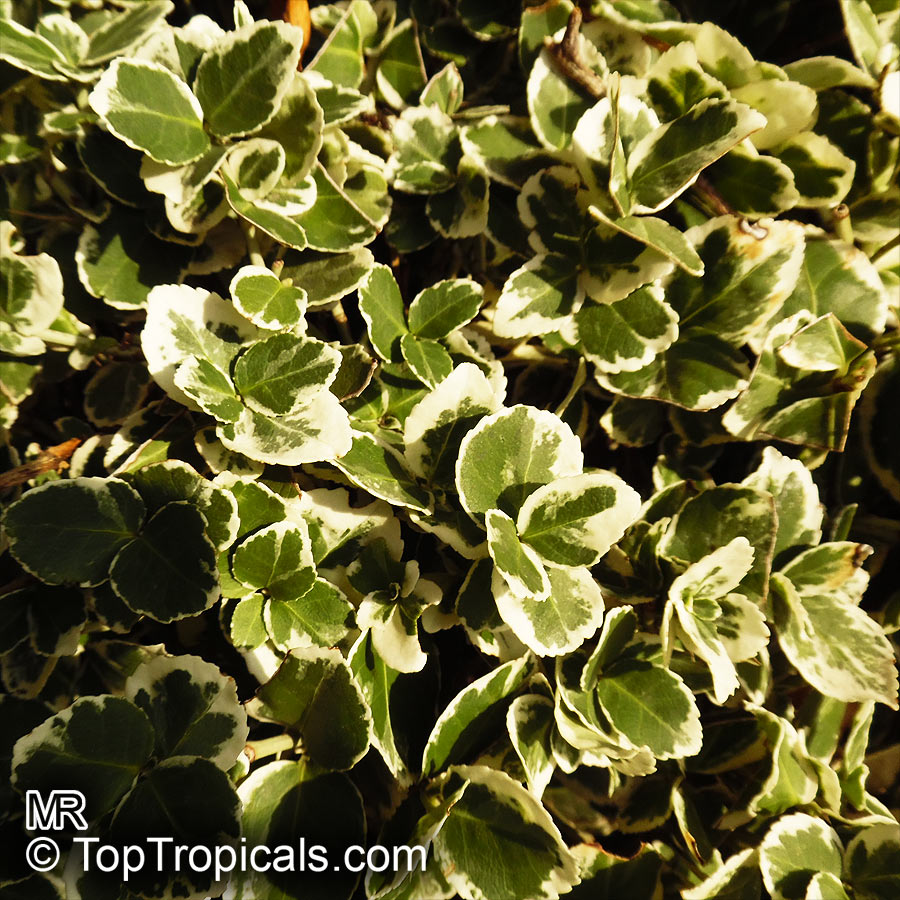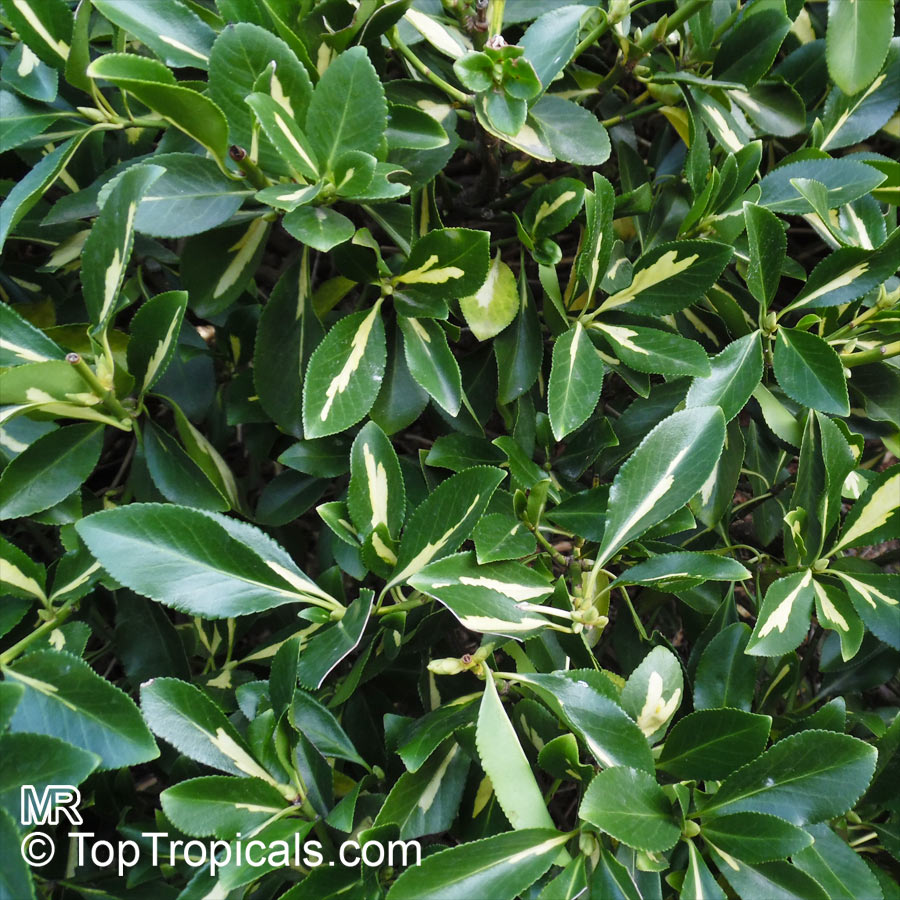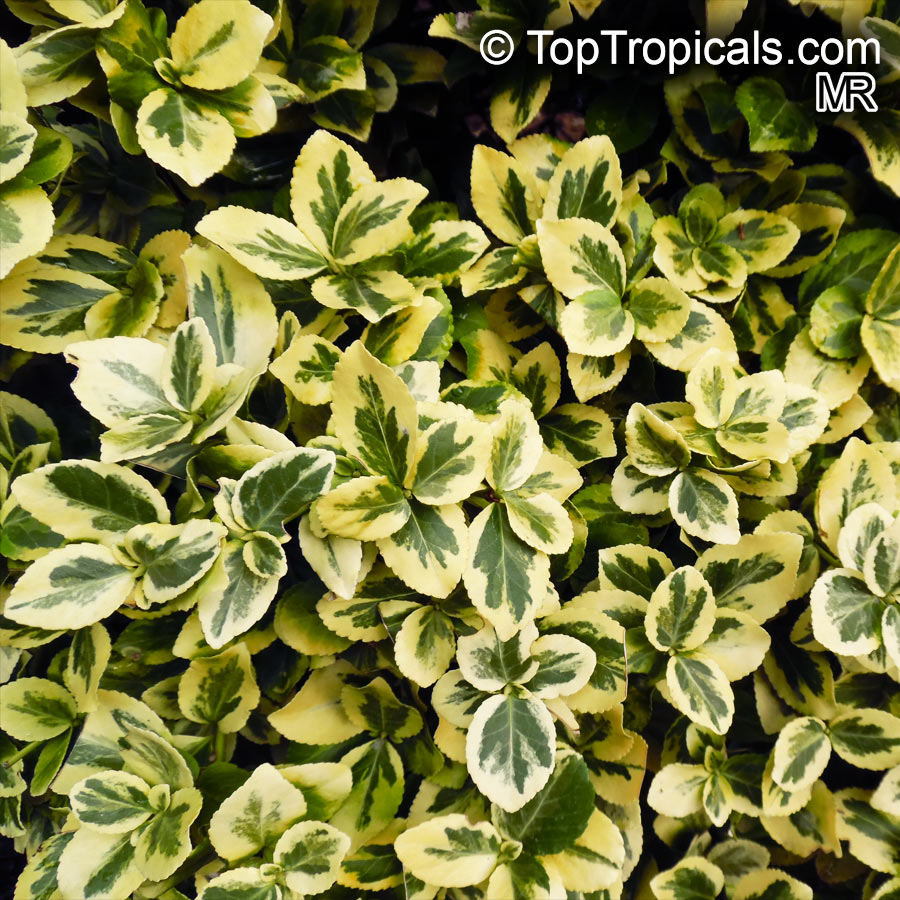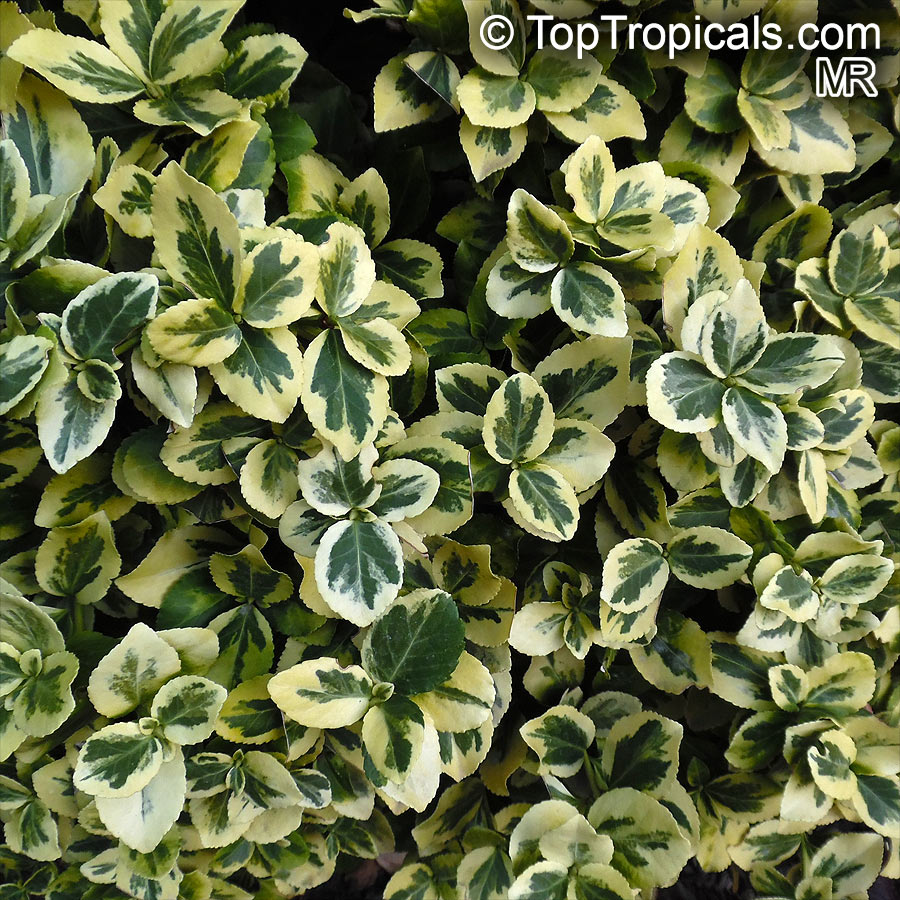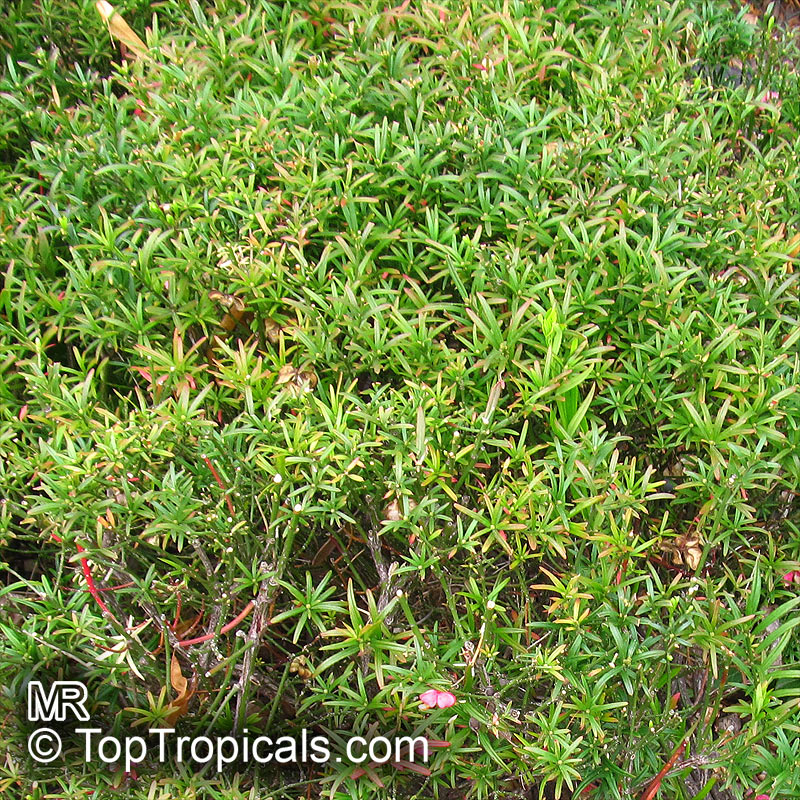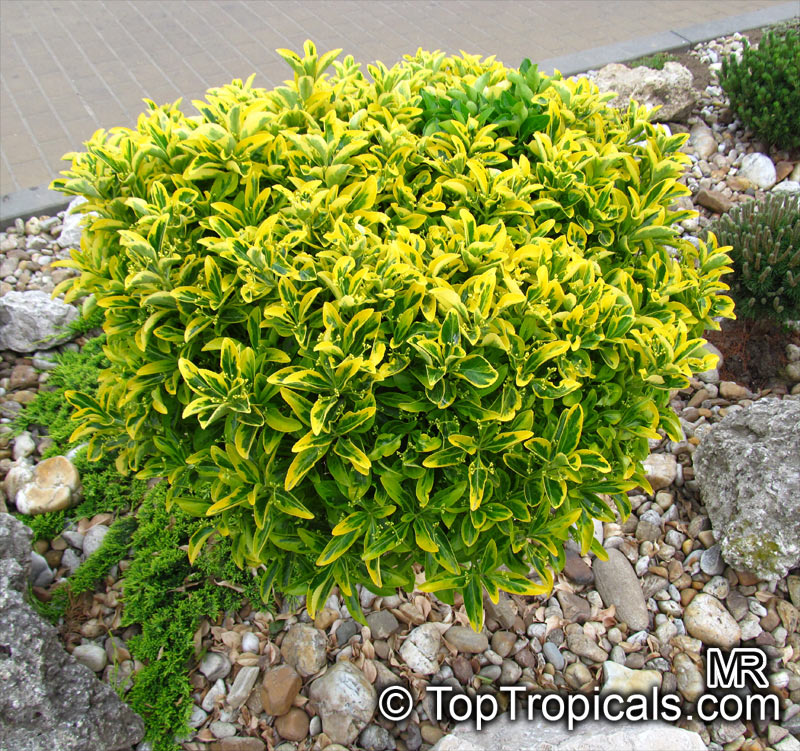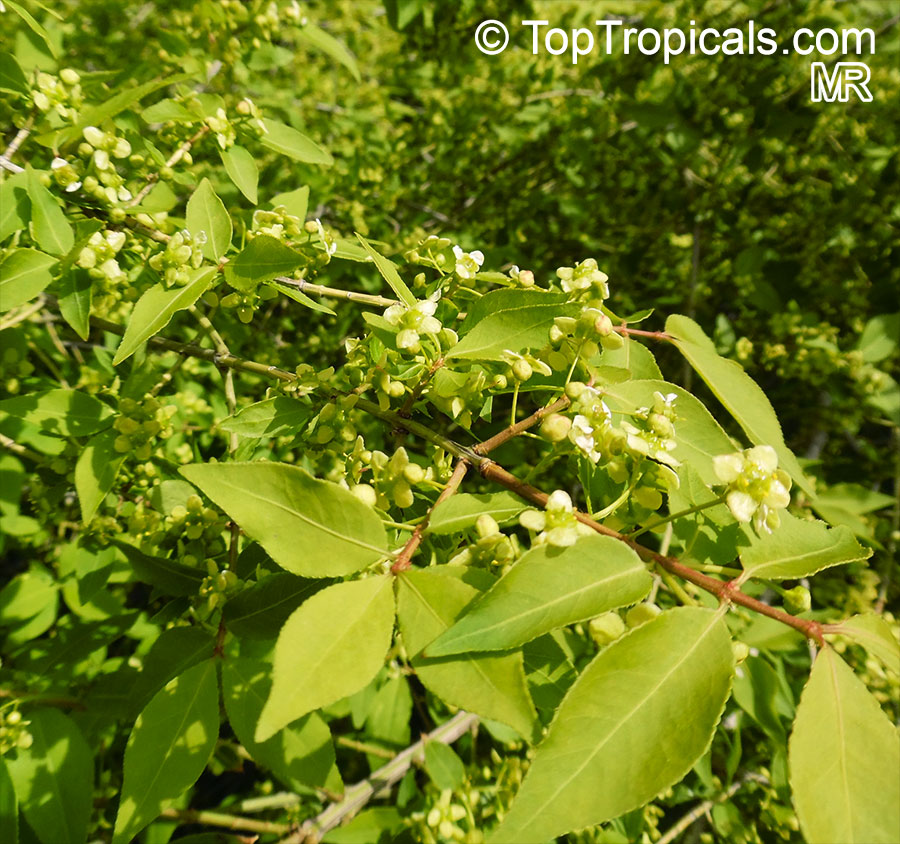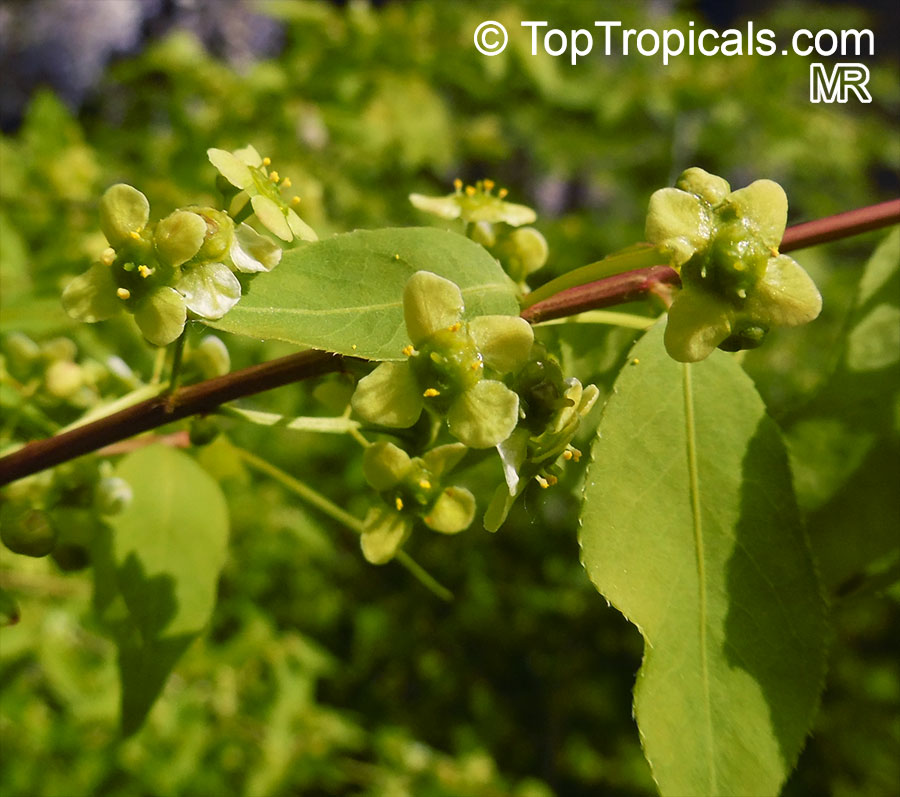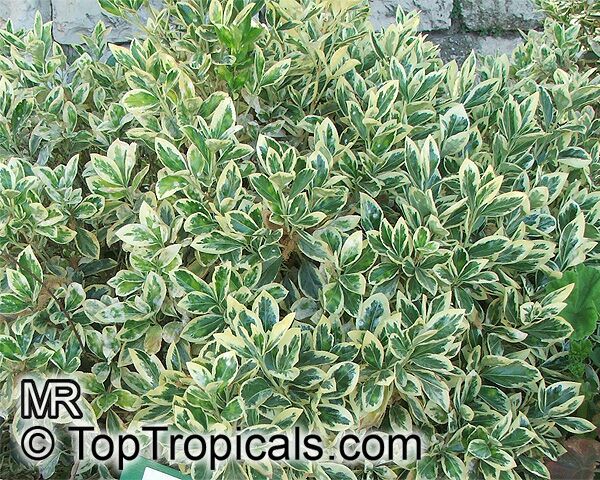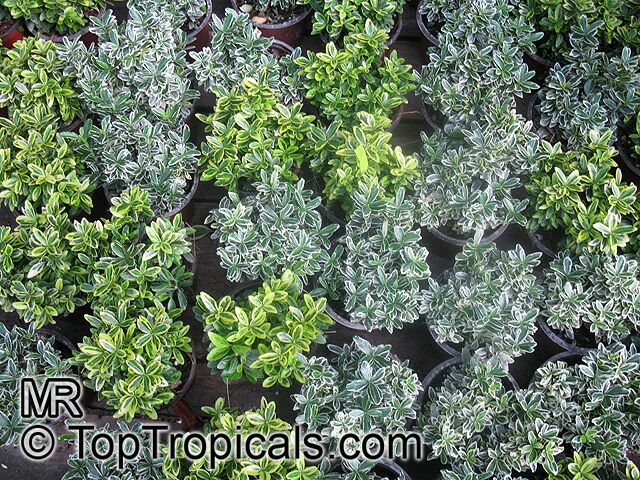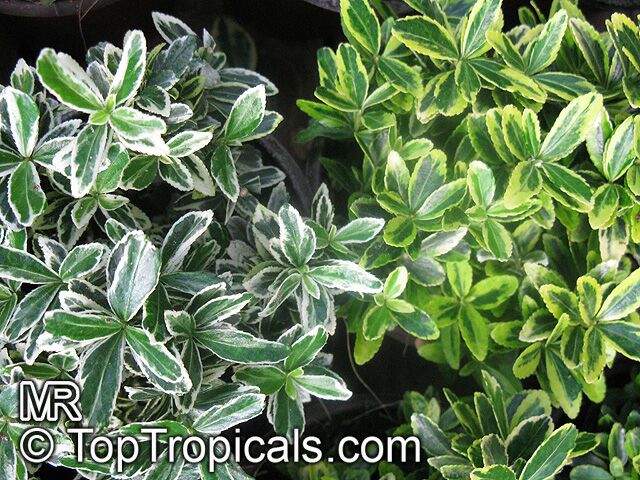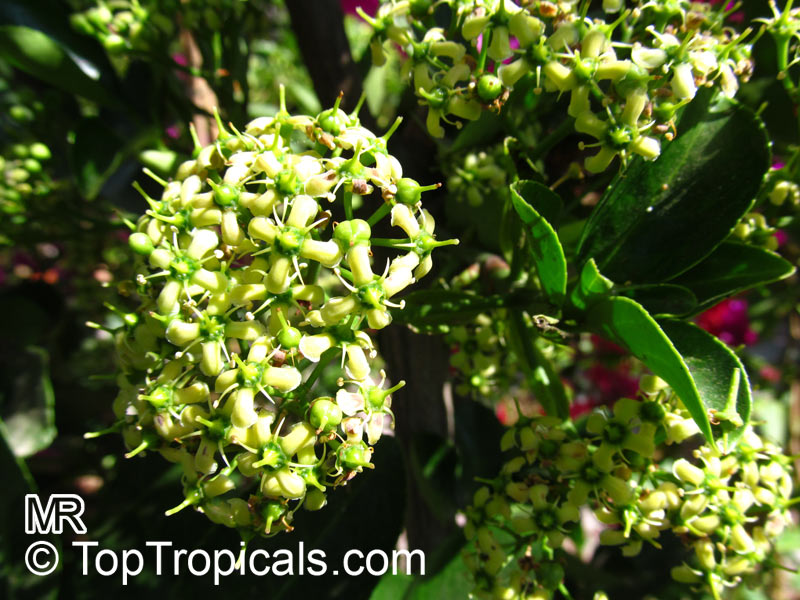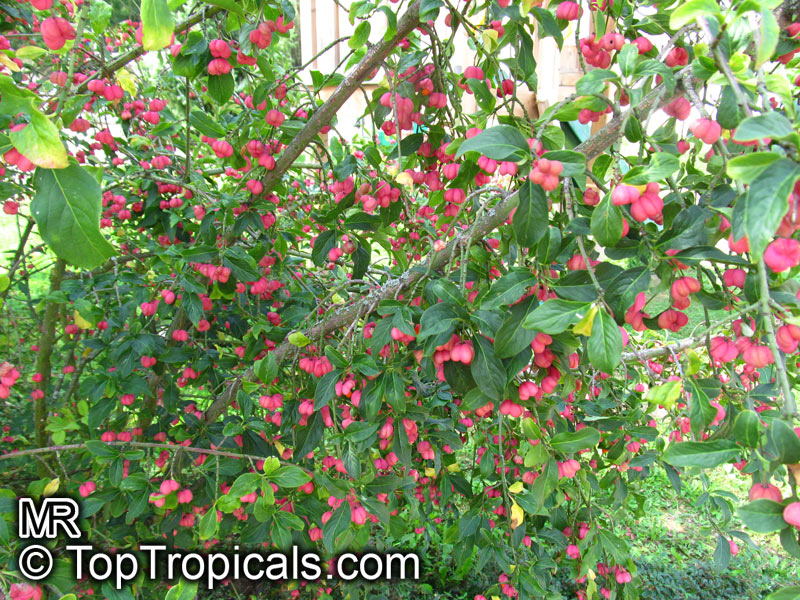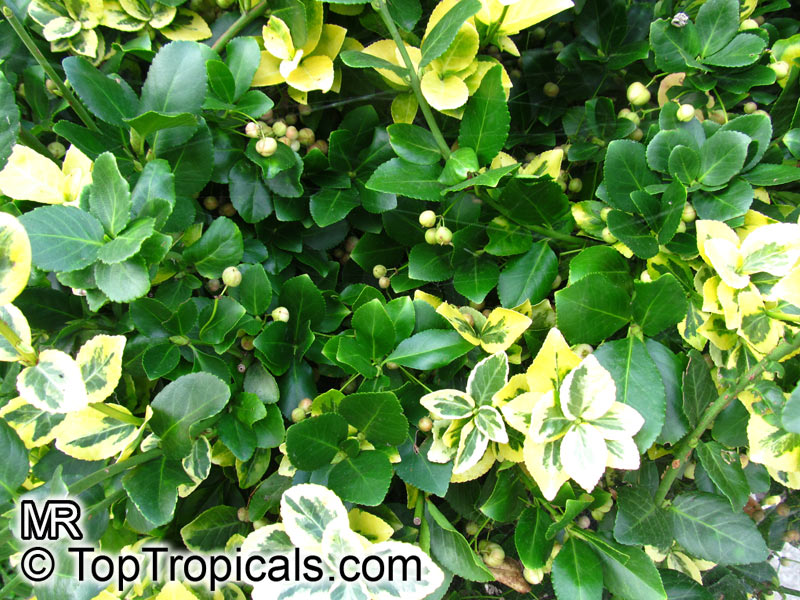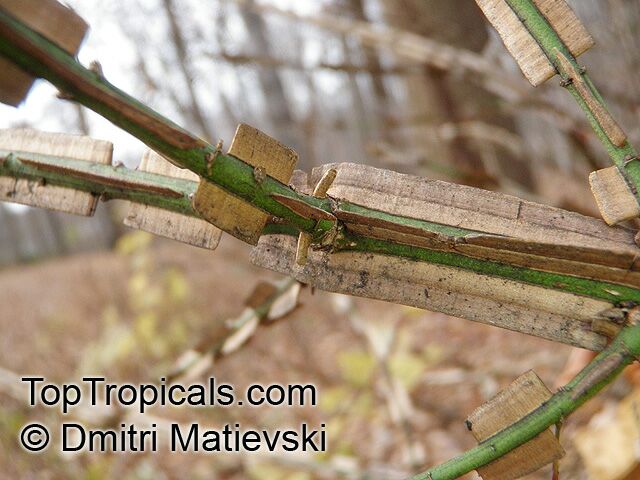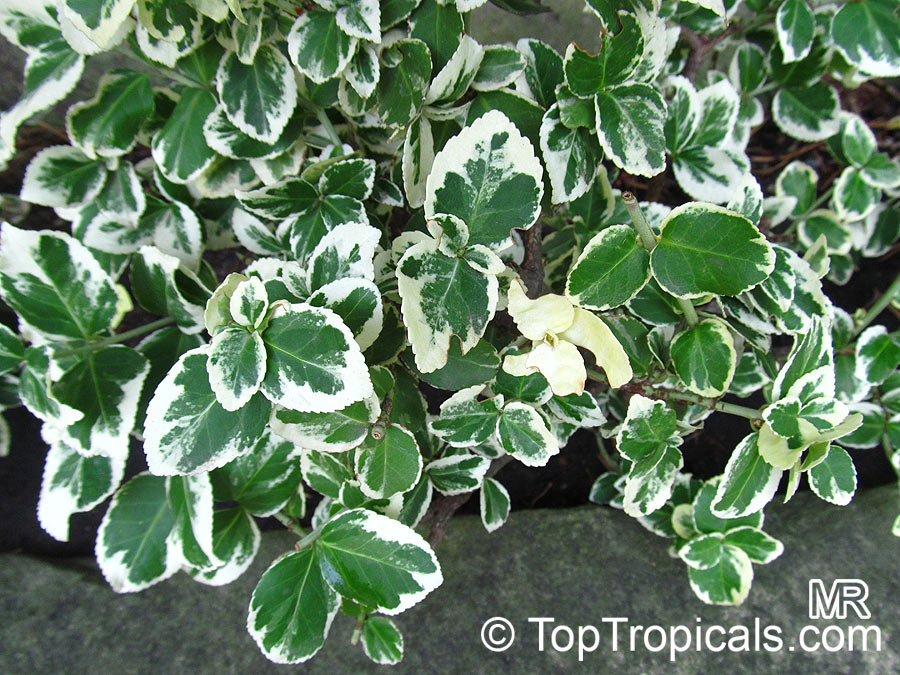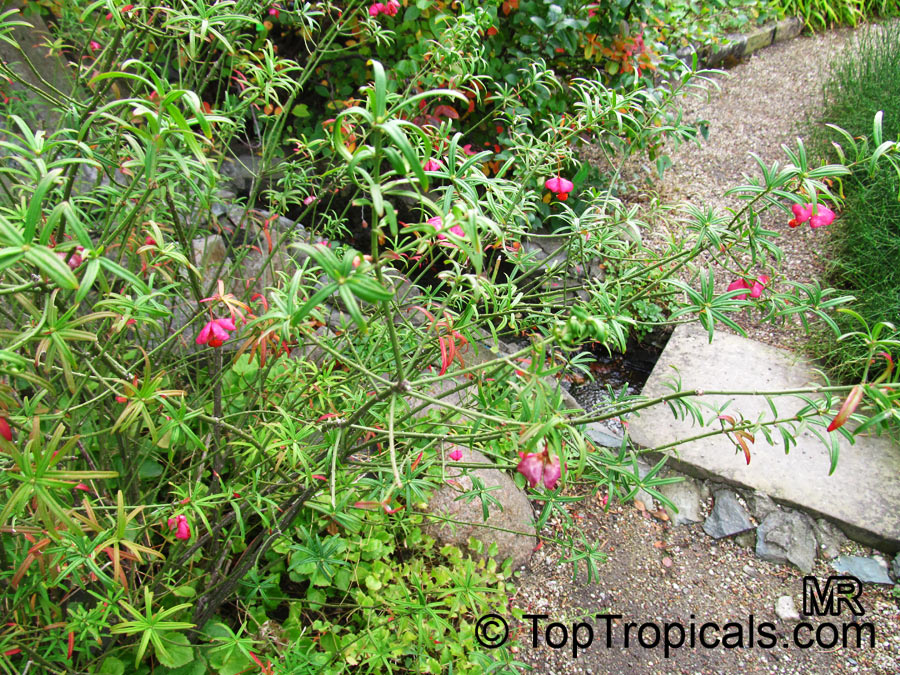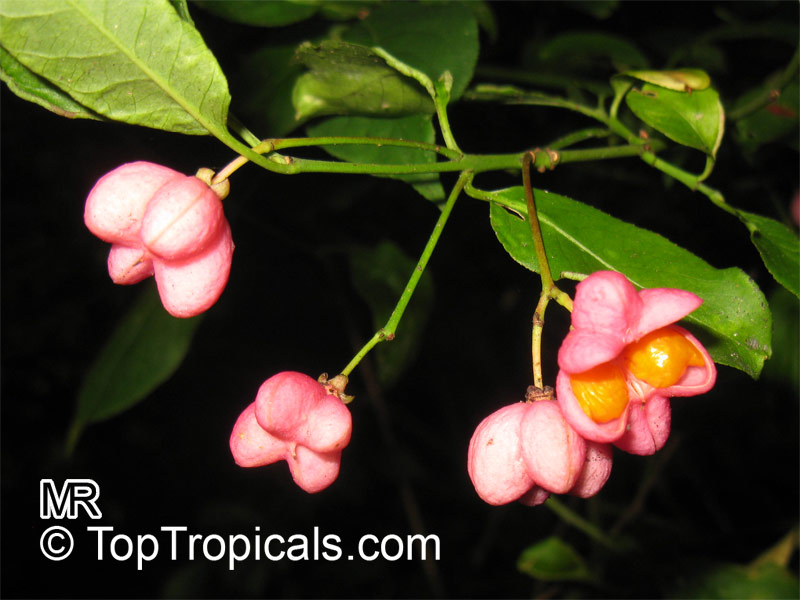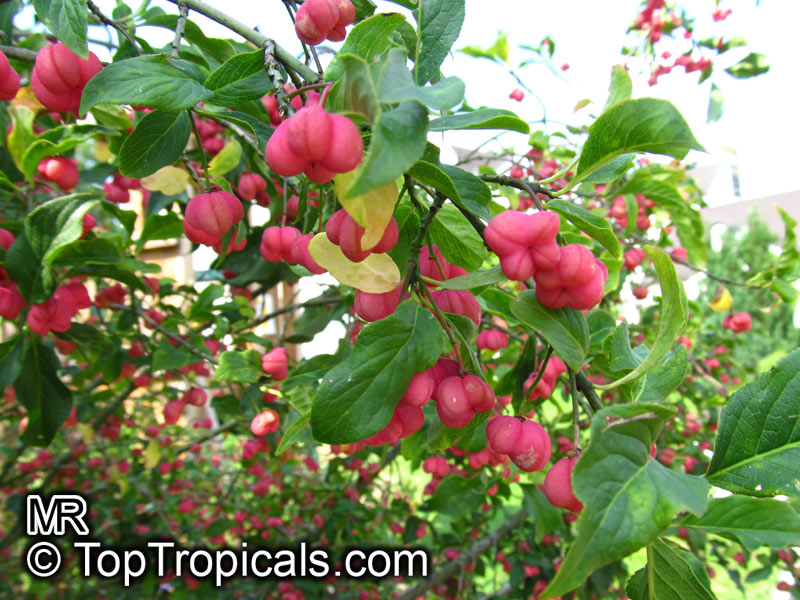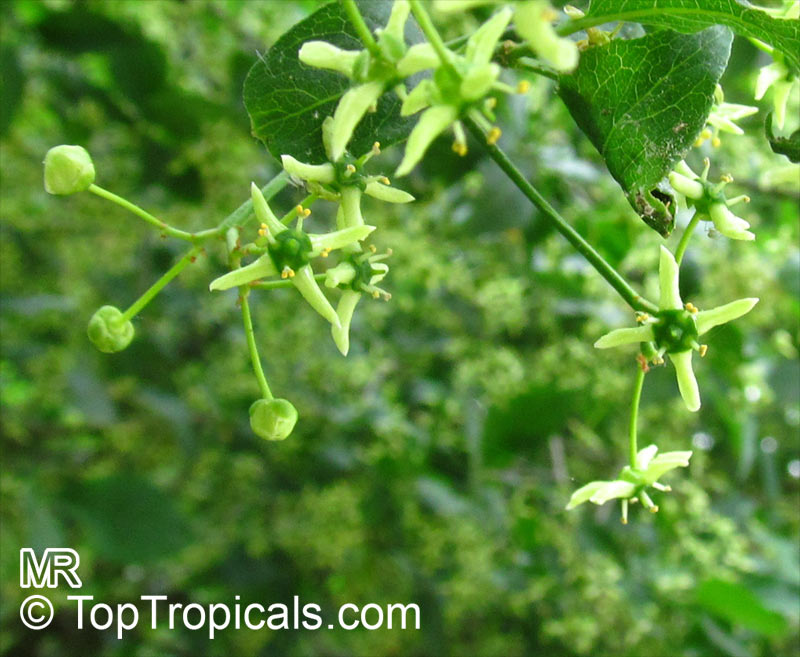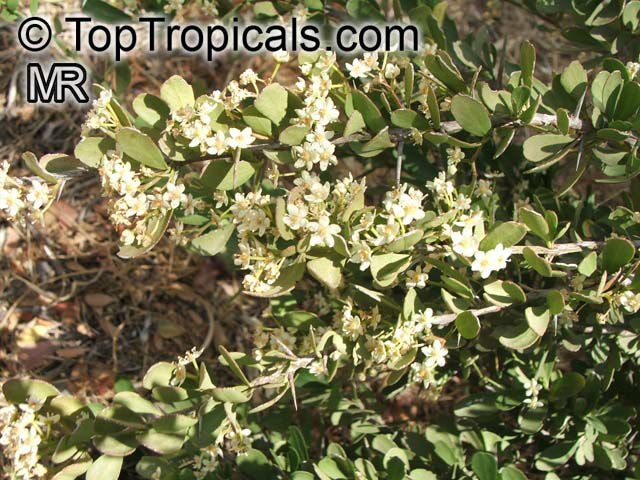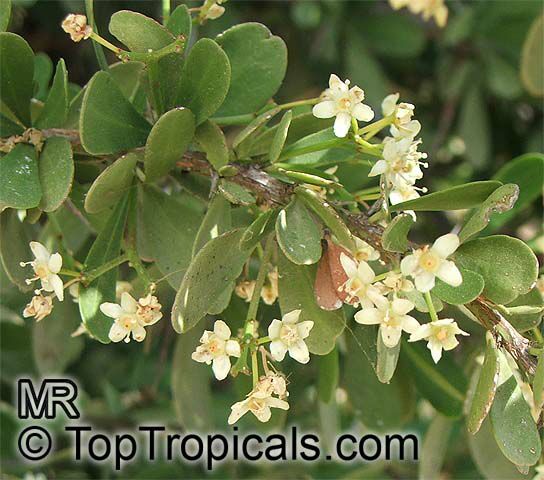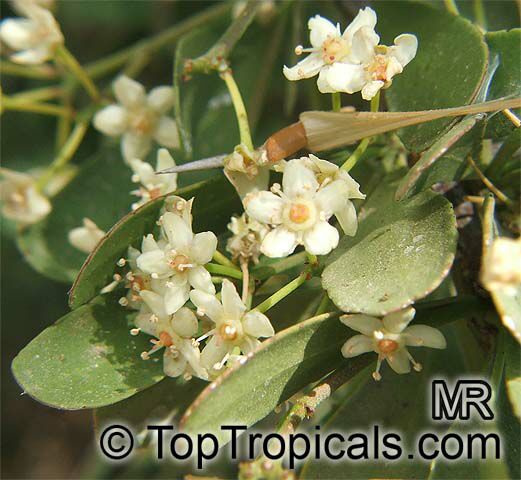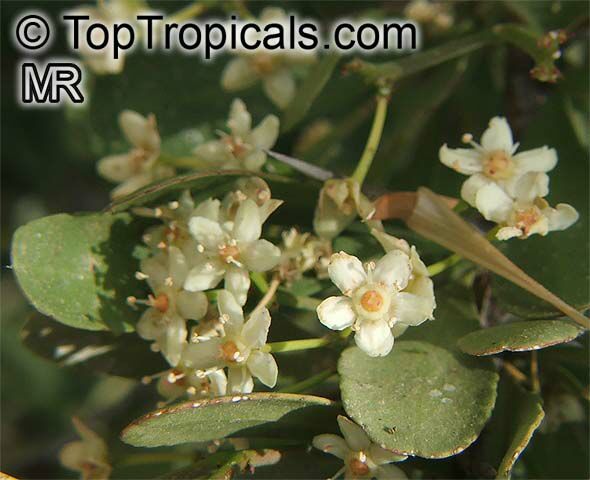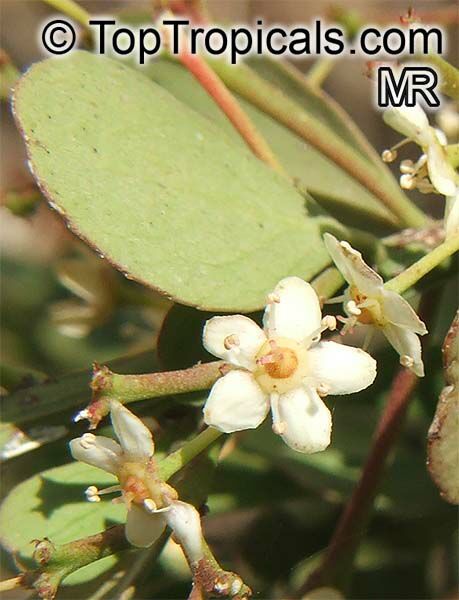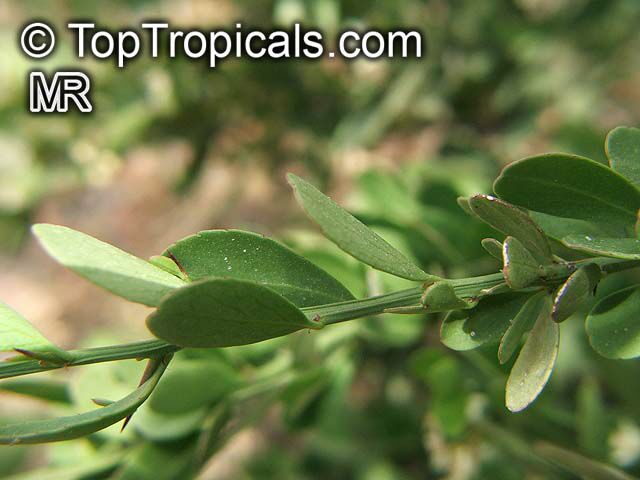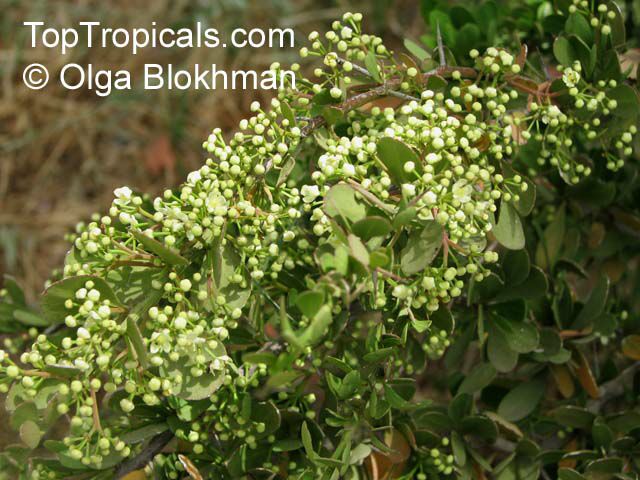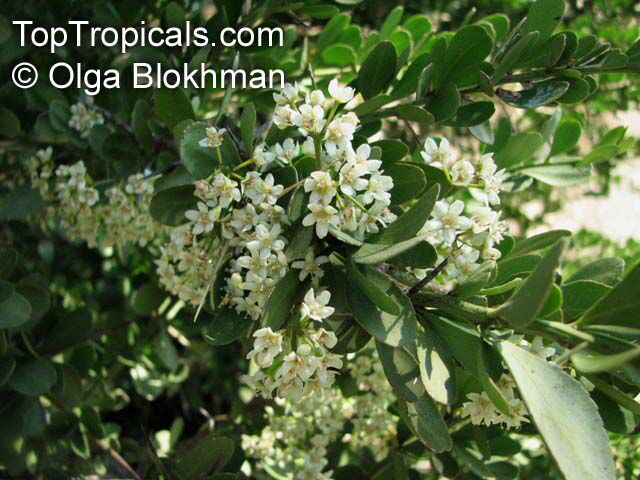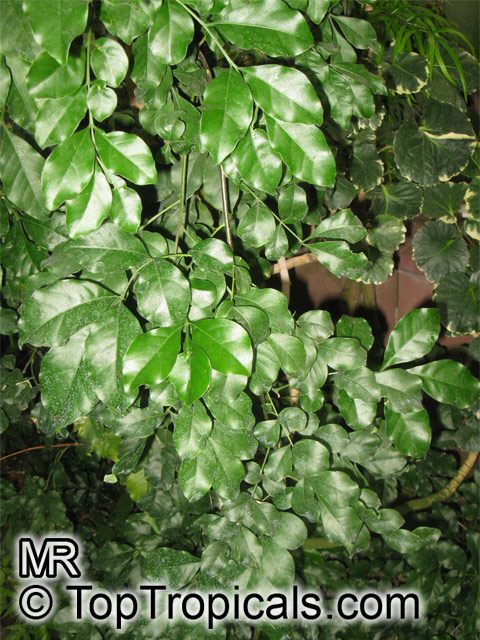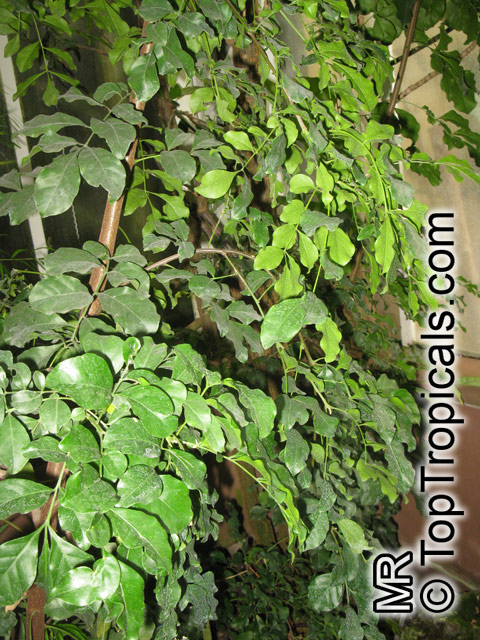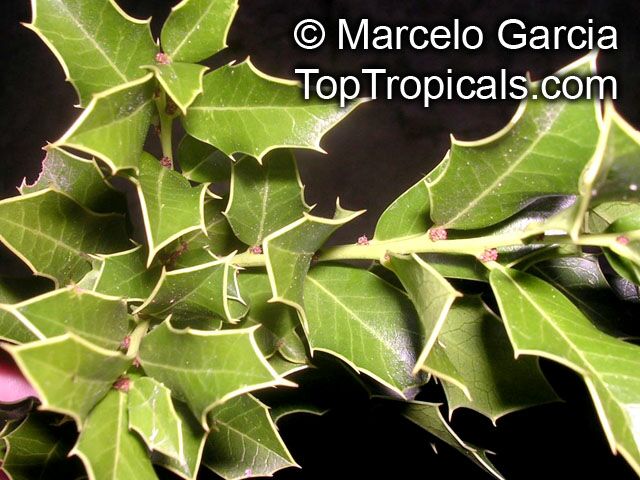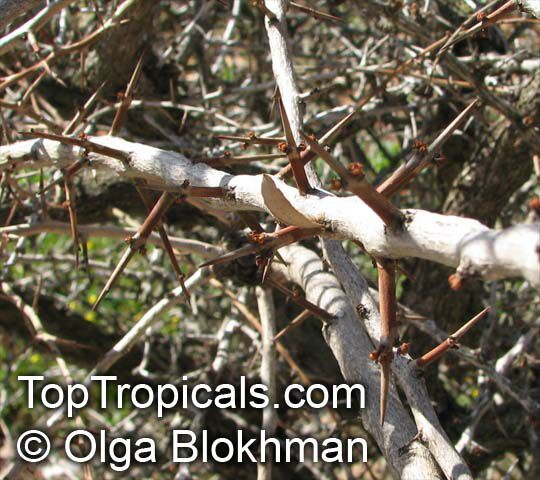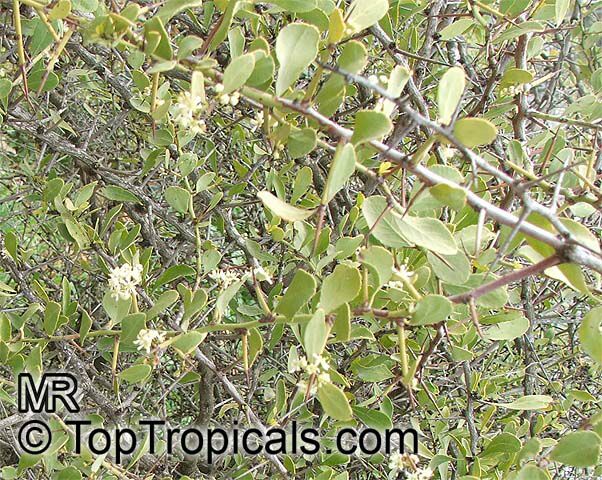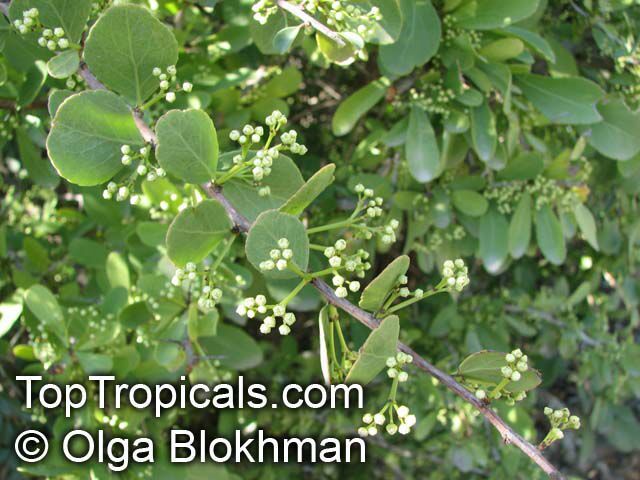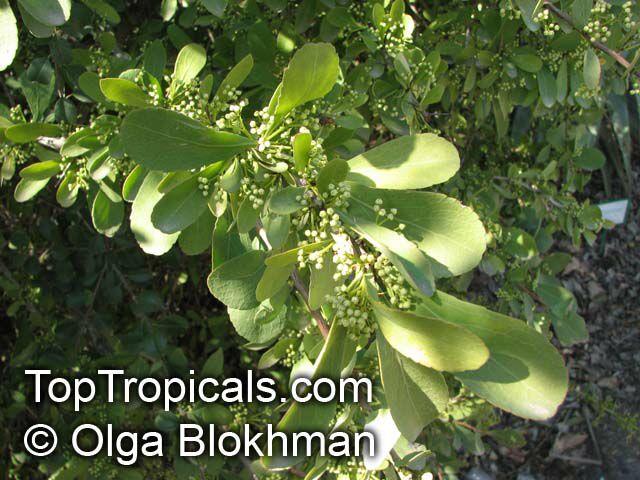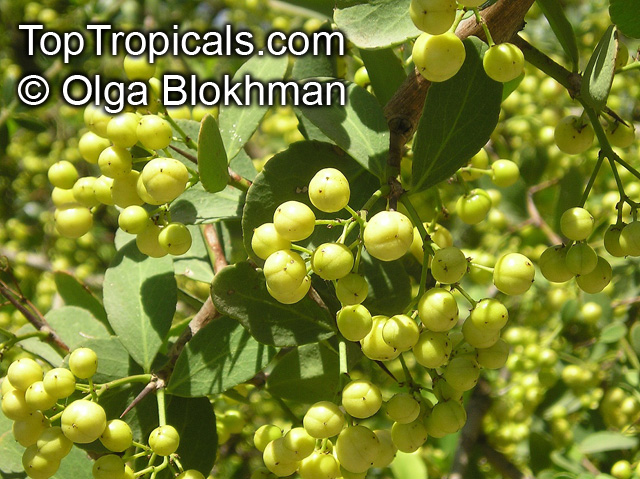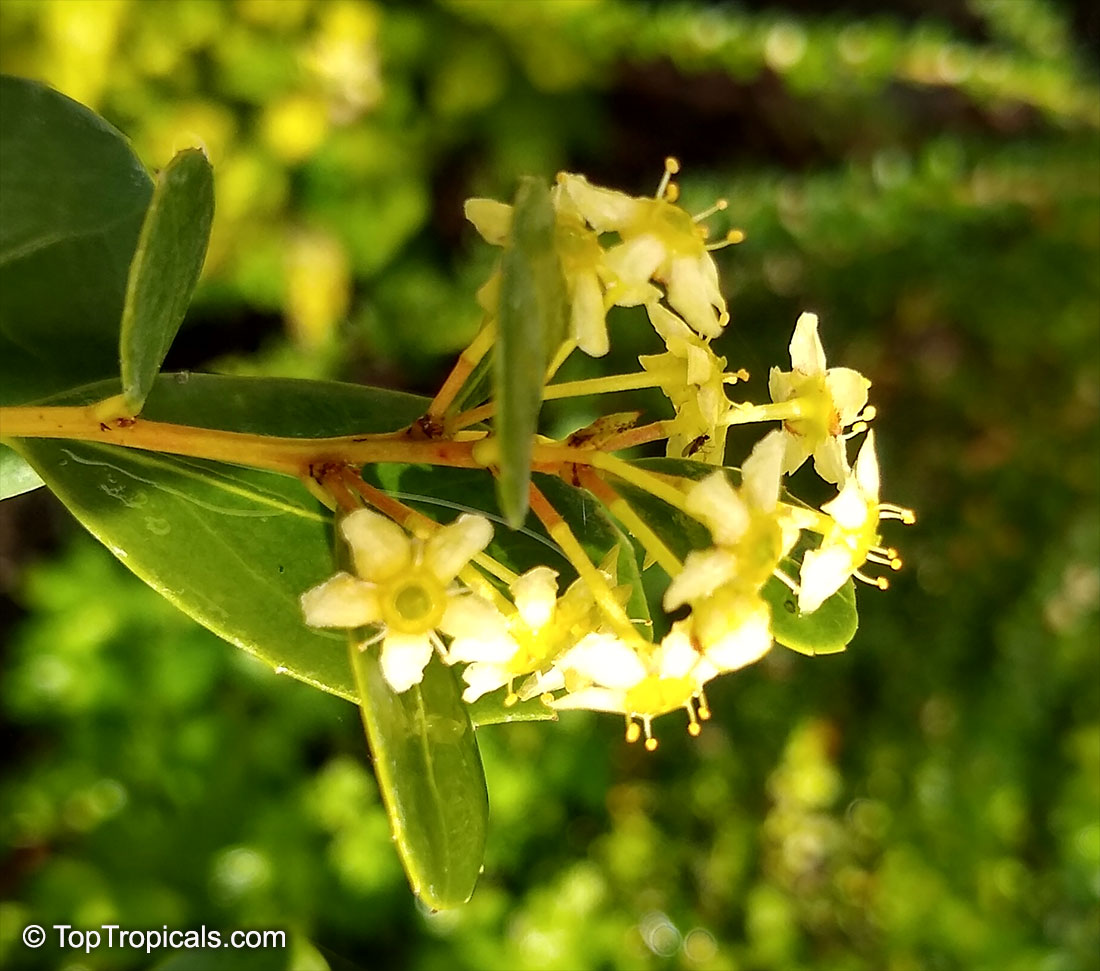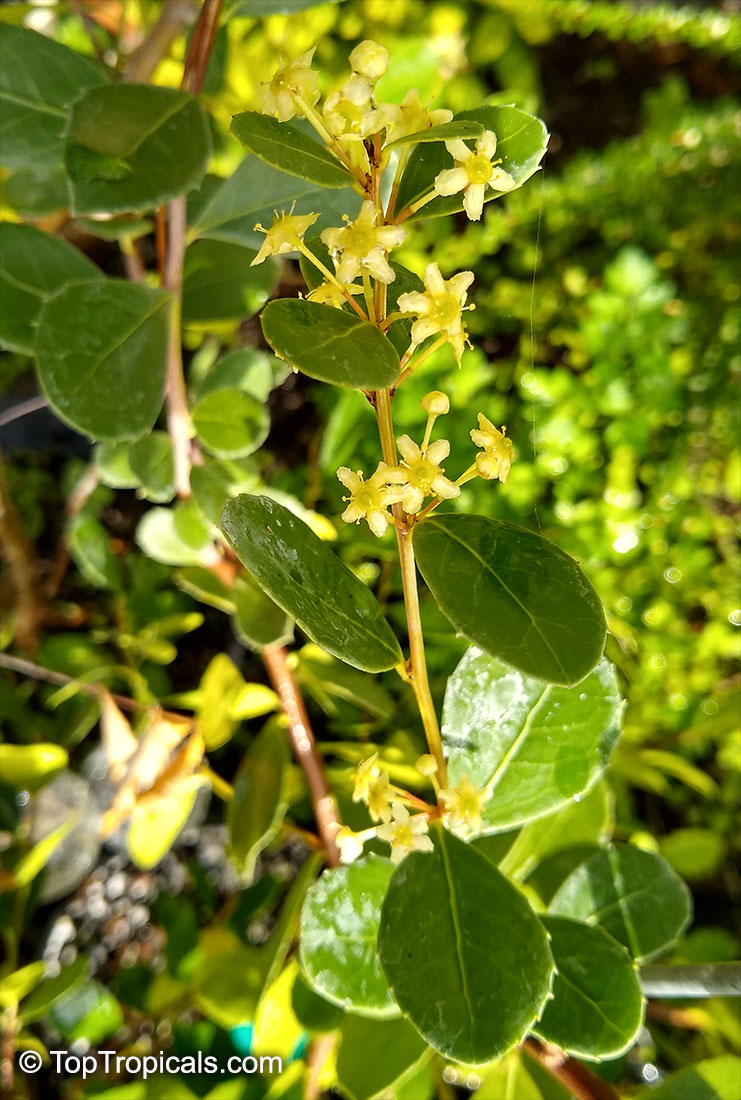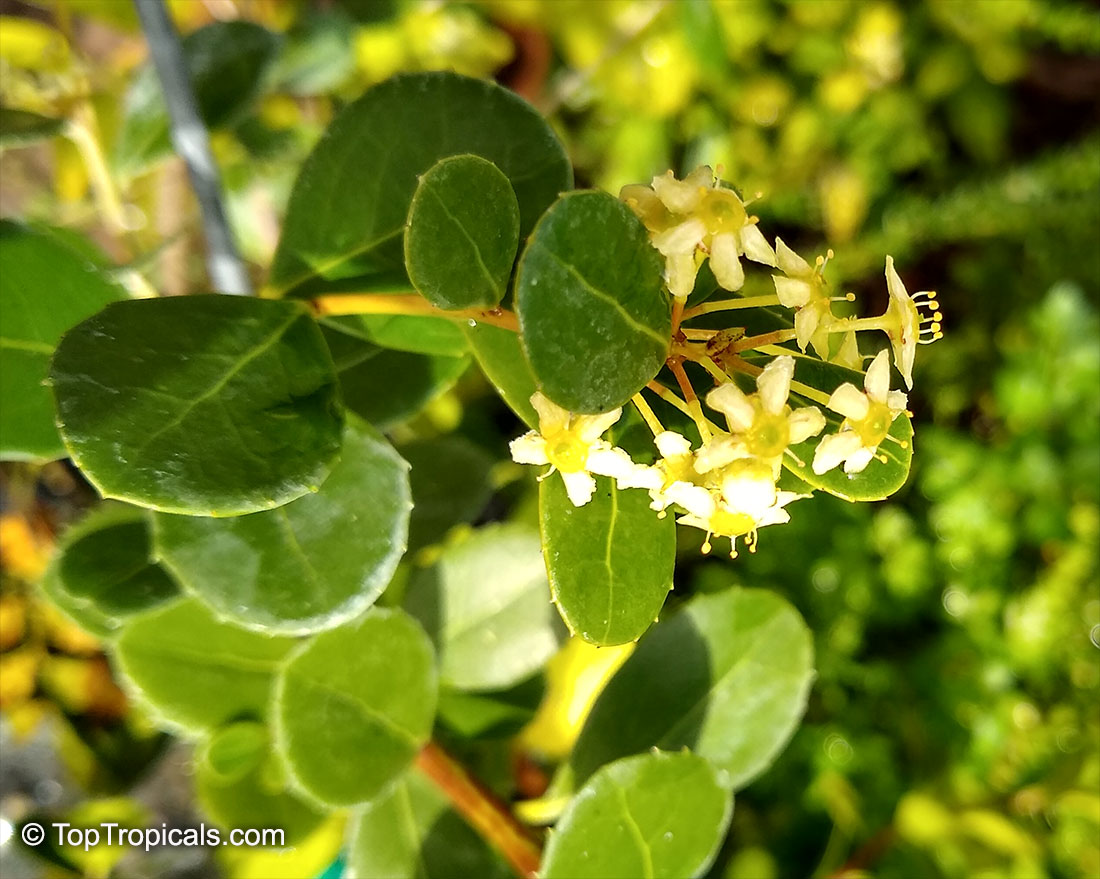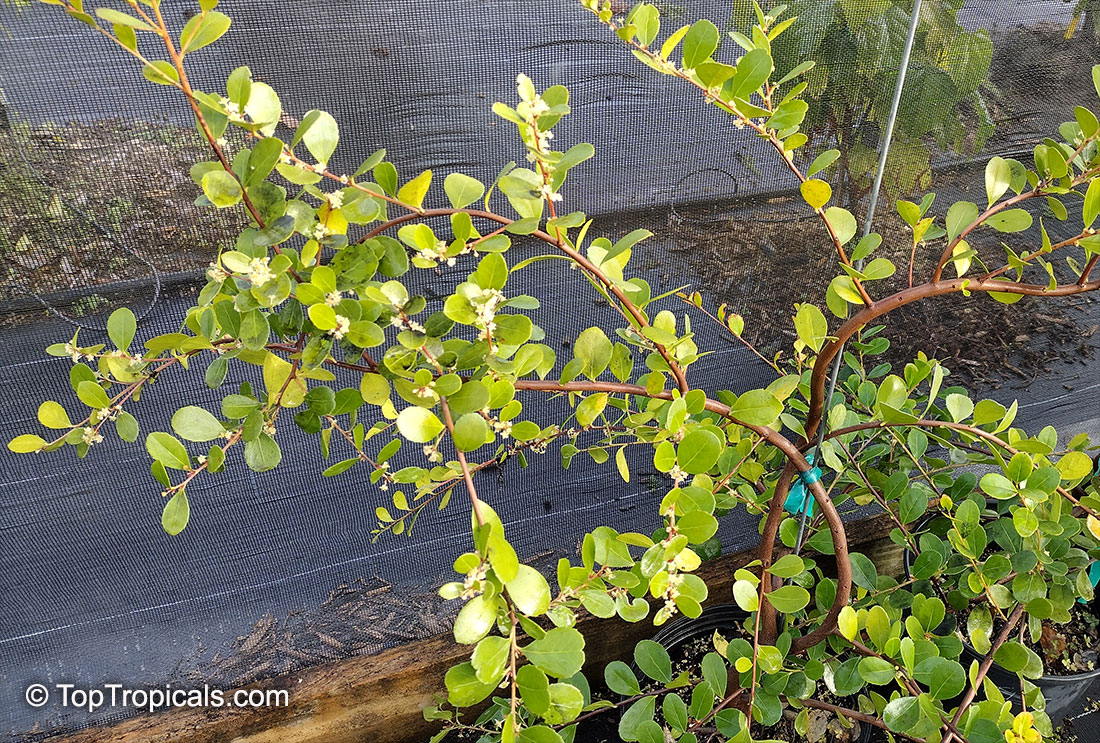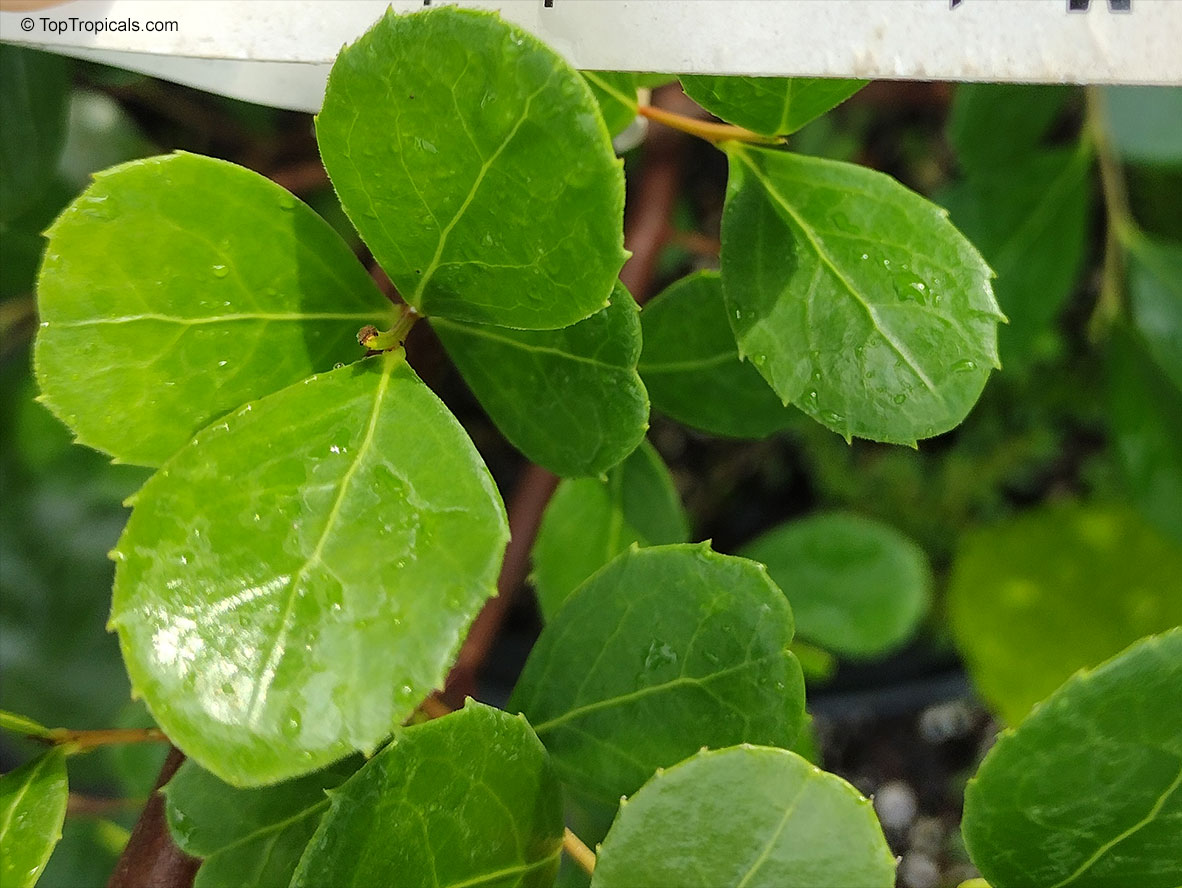Celastraceae - Botanical Family
Top Tropicals Plant Encyclopedia
| Number of plants found: 13 | Next | 
|
Go to page: | 1 | 2 |
Botanical name: Catha edulis
Common names: Bushman's Tea, Ghat, Khat, Qat
Family: Celastraceae
Origin: East Africa






It is quite tolerant of full sun but will do better in semi-shade in hotter climates.
In temperate climates, its growth can be somewhat limited during the winter months, therefore it is best grown in a pot in cold regions. For optimal growth, make sure that the pot in which the Catha edulis is placed must offer the right size, adequate drainage holes and should be of the right porosity and acidity. Use a well-draining soil, with a slightly acidic to neutral pH, and provide it with plenty of organic materials and slow-release fertilizers. When watering, make sure that it is done regularly, but never overwater the plant.
Catha edulis is a tropical small tree, growing to a height of 10-20 ft and it can be used as an ornamental or medicinal plant. The leaves are about 1.5 inches long and the bichromic flowers (white and off-white) appear from late summer to late autumn and the plant is grown in USDA Zones 9-11, requiring both moderately moist and dry conditions. Catha edulis has a multitude of ethnomedical uses and it has been used for centuries by the native people of East Africa for various purposes. The plant is widely used against respiratory diseases. In tropical Africa and Arab countries it provides the habit-forming stimulant found in the leaves.
Overall, Catha edulis is relatively easy to grow and robust and is perfect for any garden. It is an attractive, low-maintenance tree that provides year-round beauty and can be used both medicinally and ornamentally.
Botanical name: Celastrus orbiculatus
Common names: Oriental Bittersweet, Climbing Spindleberry
Family: Celastraceae
Origin: China










This splendid deciduous shrub grows 6-8m in height; its climbing vines attach well to stone, brick and wooden structures. The attractive foliage of Celastrus orbiculatus is ovate, glossy and serrated; they start out green, changing to yellow in autumn. Clusters of small greenish-white flowers appear in summer and are followed by the above-mentioned yellow fruits containing seeds. These seeds are toxic and should be removed before the plant is grown in an area frequented by children or pets.
When it comes to growing Celastrus orbiculatus, the vine prefers a moist, well-draining, fertile soil, and does best with part shade or full sun. Once established, the vine is very drought tolerant but needs regular water for good growth. It should not, however, be allowed to become waterlogged. Prune the plant heavily to keep it in control. It is invasiveness makes this bittersweet unsuitable for smaller gardens.
For cooler climates or regions where winter temperatures are prone to drop to 30s F (-1.1C) the plant can be cultivated in containers, which can easily be moved indoors for winter protection. Place the pot in an area that receives bright, filtered light and continue watering on a regular basis. If signs of wilting, browning foliage, poor growth and pest infestation occur, consider applying fertilizer once a month.
Celastrus orbiculatus is an attractive, fast-growing climber that produces sun-catching blooms and eye-catching fruit capsules. This vine is a good choice to add height to a garden, and is greatly enjoyed by butterflies and hummingbirds. However, due to its invasiveness, this species should be planted with caution.
Botanical name: Crossopetalum ilicifolium
Common names: Christmasberry, Quailberry
Family: Celastraceae
Origin: Florida








Grows to 2 feet tall and spreads rapidly via underground runners. Peak season of bloom is late winter and early spring with clusters of fragrant white to creamy yellow flowers. Cluster of bright red berries follows the flowers in fall and remain through winter, providing both beautiful color and welcomed winter food for birds. Plant in full sun to part shade. Regular water is usually sufficient but will benefit from more in hotter climates. Maintenance-free growth habits make Crossopetalum ilicifolium an excellent choice for a low-growing ground cover.
This is a popular specimen for xeriscaping applications, making it an excellent choice for dry areas that receive only limited moisture. Crossopetalum ilicifolium will attract butterflies and hummingbirds to the garden due to its attractive, fragrant flowers. It can also act as a living fence or trellis due to its prickly, thorny or spiny stem. It will reach a height of 2-5 feet over time, and its runners will spread to create a low-growing groundcover.
Crossopetalum ilicifolium is adaptable to a wide range of soils and can tolerate drought quite well, but it will perform better with regular water. When grown in pots, it should be allowed to dry out almost completely before the next watering. Alternatively, it can be grown in part shade, making it a good choice for areas that receive too much direct sunlight.
This plant does best in warmer climates and can grow in USDA Zones 9-11. For those living in colder regions, it can be grown in pots and brought indoors during cold periods. In this case, the pot should be placed in a cool spot with bright indirect light, and the soil should be kept slightly moist. Fertilizing the plant once in a while will help to keep it healthy.
Botanical name: Elaeodendron sp.
Common name: False Olive
Family: Celastraceae
Origin: South America, South Africa






Elaeodendron quadrangulatum is an attractive, evergreen tree. Leaves are glabrous, elliptic to ovate.
Elaeodendron quadrangulatum is very similar to Elaeodendron croceum (Saffron Wood) from South Africa. Saffron Wood is medium evergreen tree to tall with a neat, upright shape. The bark is grayish, with a conspicuous layer of a powdery yellow pigment in the freshly exposed bark.
Botanical name: Euonymus sp.
Common name: Euonymus
Family: Celastraceae
Origin: Japan









Euonymus is the ideal plant for bonsai and rock gardens and can be able to be grown under many types of conditions. It prefers full sun to semi-shade, moderate to regular water, and sandy soils. It will tolerate a wide range of temperatures and weather fluctuations. However, in cold climates, it requires more care and protection from winter's chill. When placed in a pot, make sure to add plenty of organic matter before planting and keep the roots of the plant away from cold and extreme temperatures. If grown in a pot, it should be watered on a regular basis to ensure healthy root growth and must not be left to dry out.
When grown in USDA Zones 9-11 it is an ideal ornamental for any landscape, with its attractive foliage and relatively fast growth. It has several ethnomedical uses in traditional medicine, from treating fungal and bacterial infections to high fever. The bark and fruits of the plant are also considered to be antirheumatic and diuretic. It also displays high salt tolerance and can be planted near the seaside or in saline soils.
Overall, Euonymus is an ideal and hardy plant to add to any garden. It can thrive in most conditions and provide a striking accompaniment to any landscape with its vibrant foliage and antirheumatic properties. With the added benefit of being tolerant of maritime exposure, this is a great choice for those living near the sea. Furthermore, plants grown in colder climates should be taken extra care of to ensure that they remain healthy and thriving.
Botanical names: Gymnosporia heterophylla, Maytenus heterophylla
Common name: Common Spike Thorn
Family: Celastraceae
Origin: South Africa








Botanical name: Hippocratea paniculata
Common name: Hippocratea
Family: Celastraceae
Origin: Tropical Africa





Botanical names: Maytenus ilicifolia, Celastrus ilicinus
Common name: Espinheira Santa
Family: Celastraceae
Origin: South America








Espinheira santa is a small, shrubby evergreen tree growing to 5 m in height with leaves and berries that resemble holly. It is even found in city landscapes for its attractive, holly-like appearance.
Leaf infusions and leaf powder in capsules or tablets are currently being used for ulcers, as an antacid, as a laxative, as a colic remedy, to eliminate toxins through the kidneys and skin, to support kidneys, support adrenal glands, support digestive functions, and as an adjunctive therapy for cancer.
Botanical name: Maytenus senegalensis
Common name: Confetti Tree
Family: Celastraceae
Origin: South Africa








| Next |  |
Use link to repeat this search:
https://toptropicals.com/cgi-bin/garden_catalog/cat.cgi?search_op=and&keyword_op=and&language=e&family=Celastraceae
&number=10&no_change_lang=1&user=tt&sale=1&first=0
